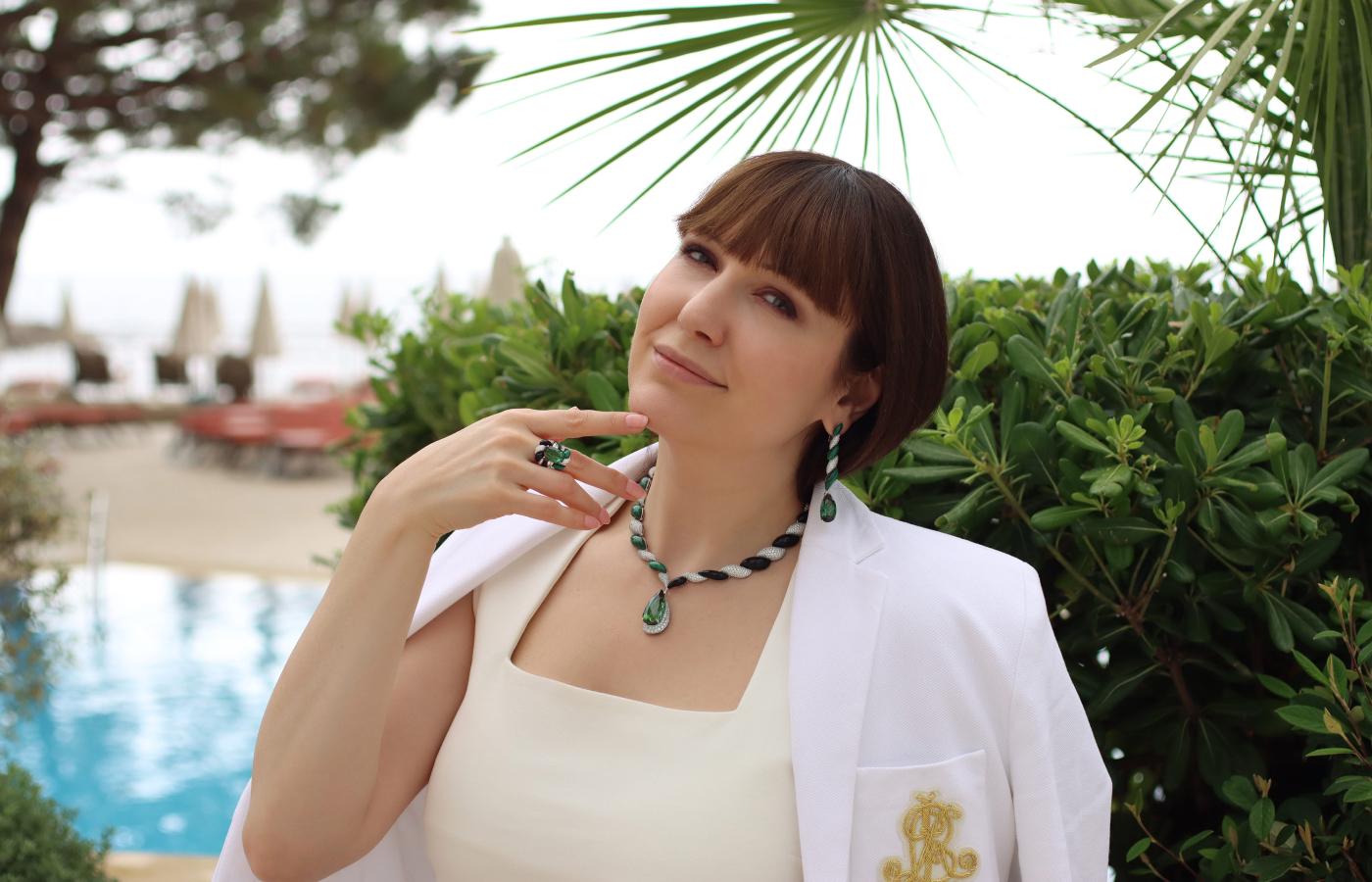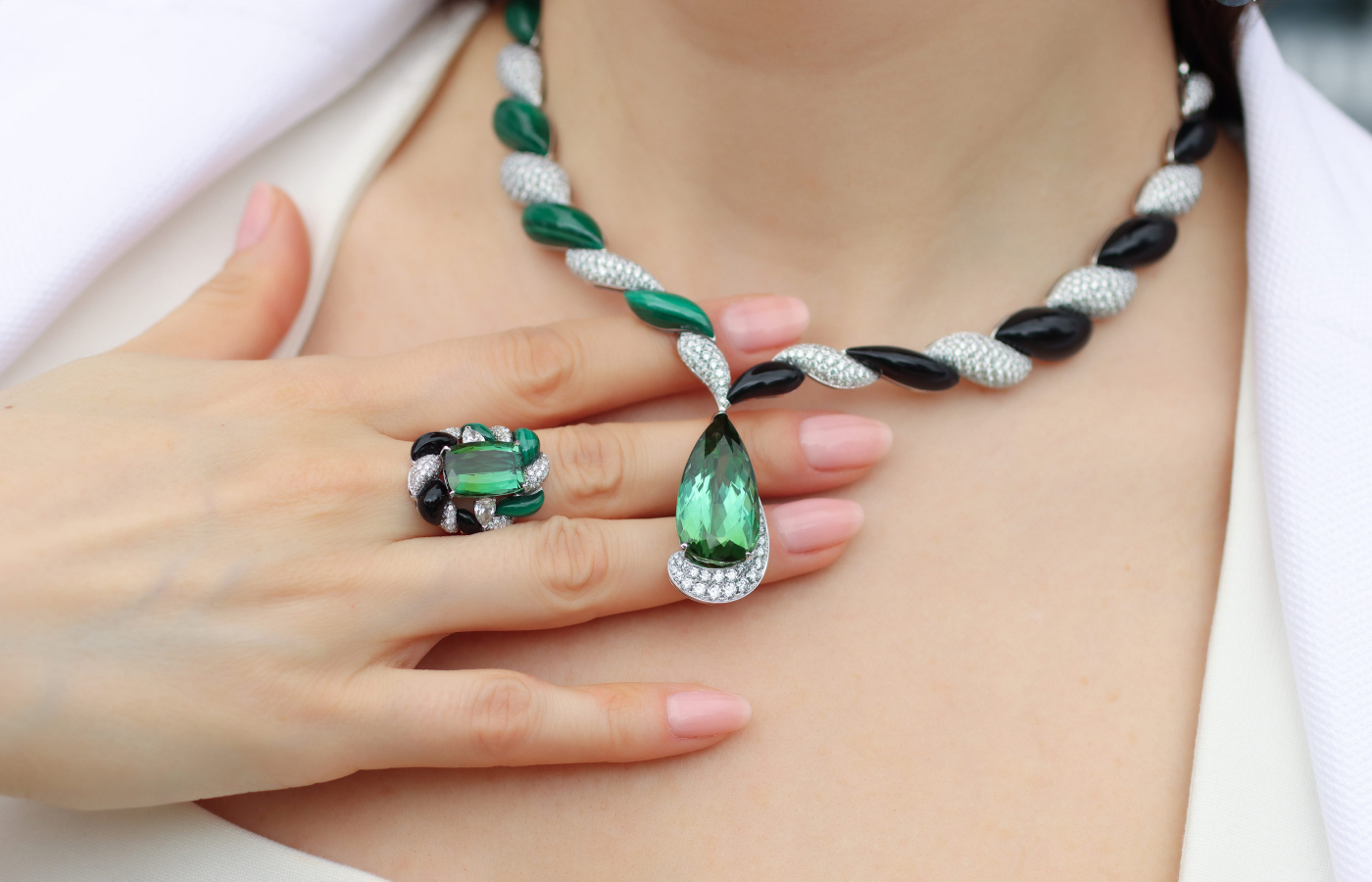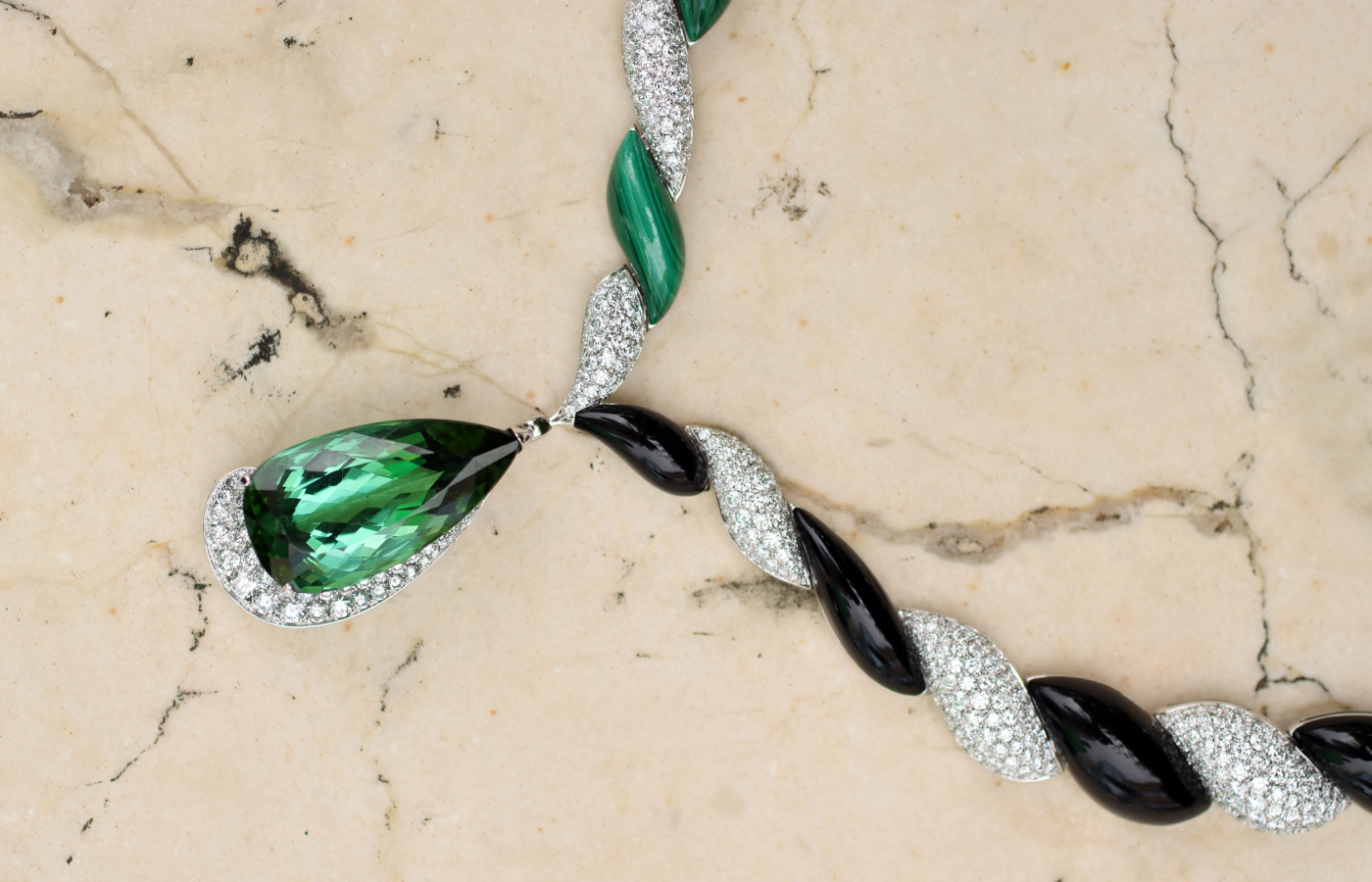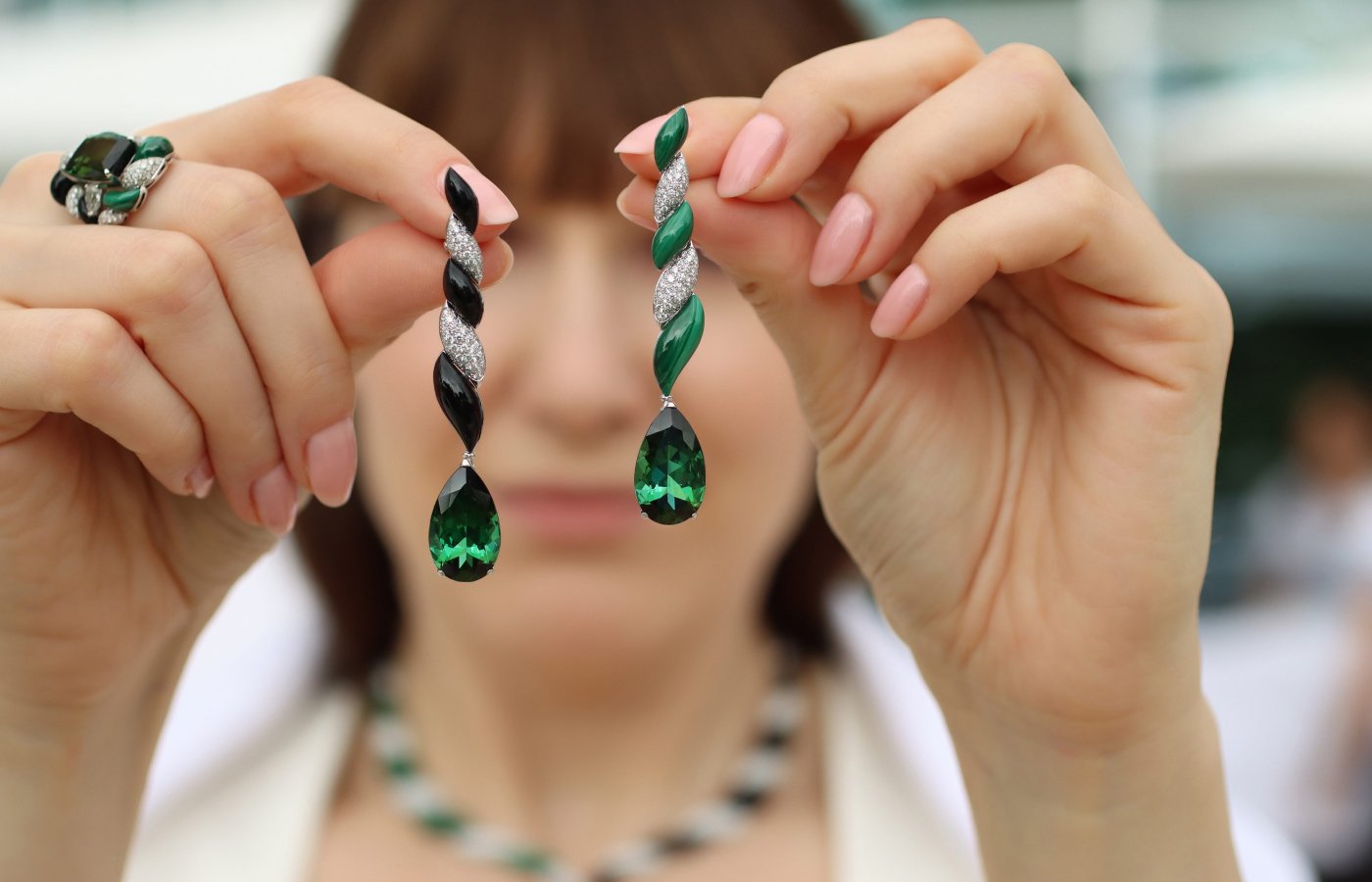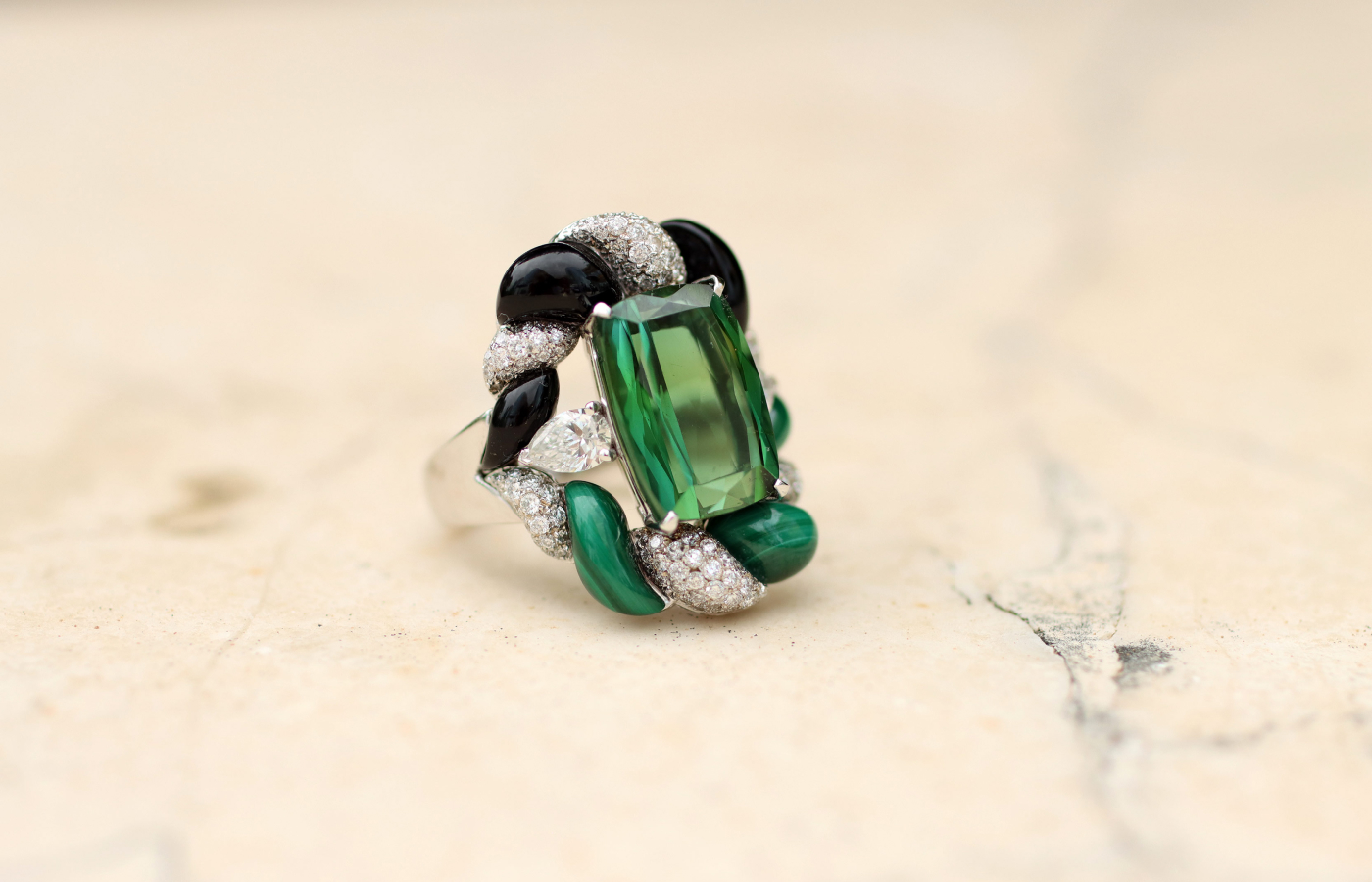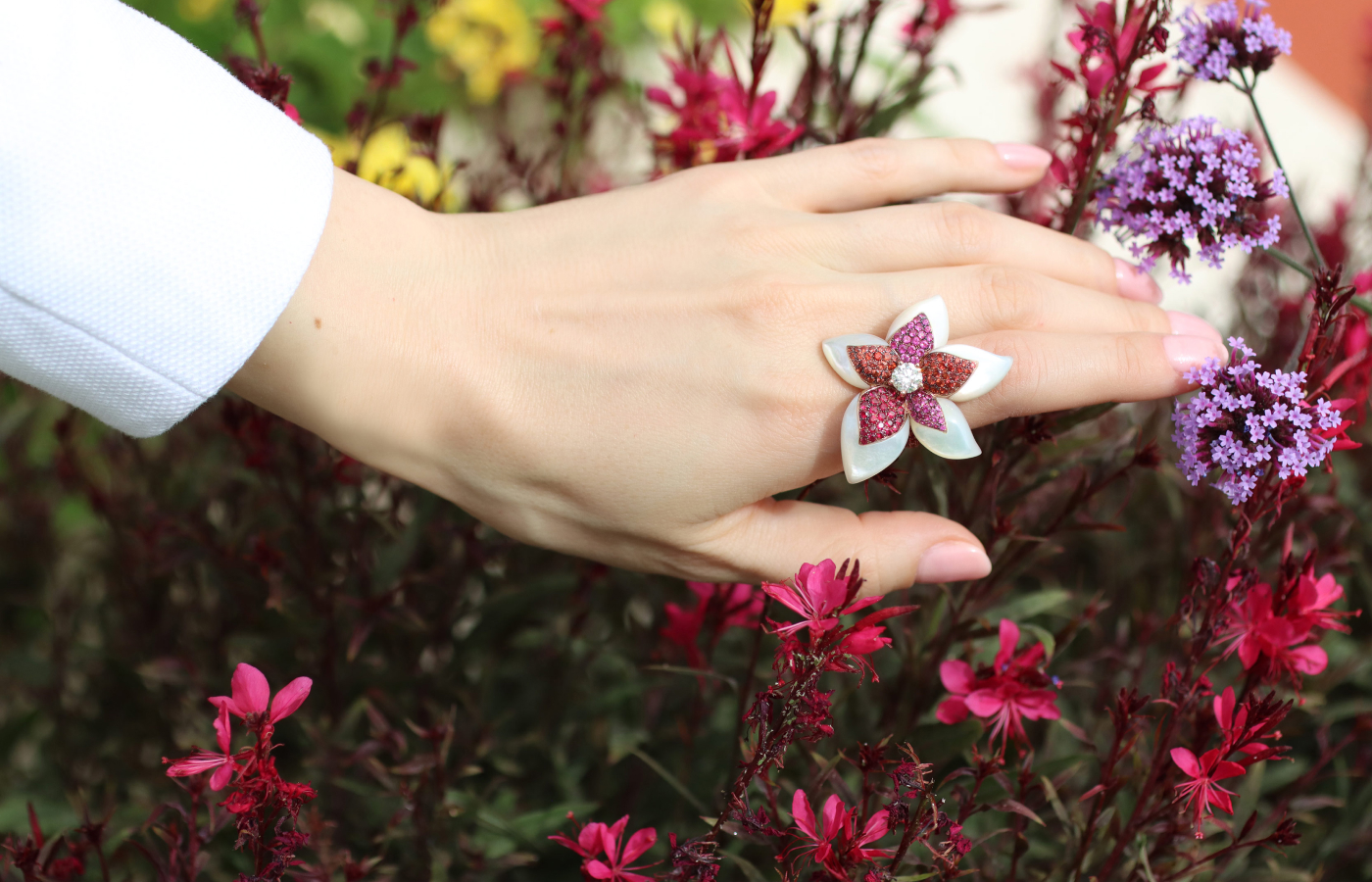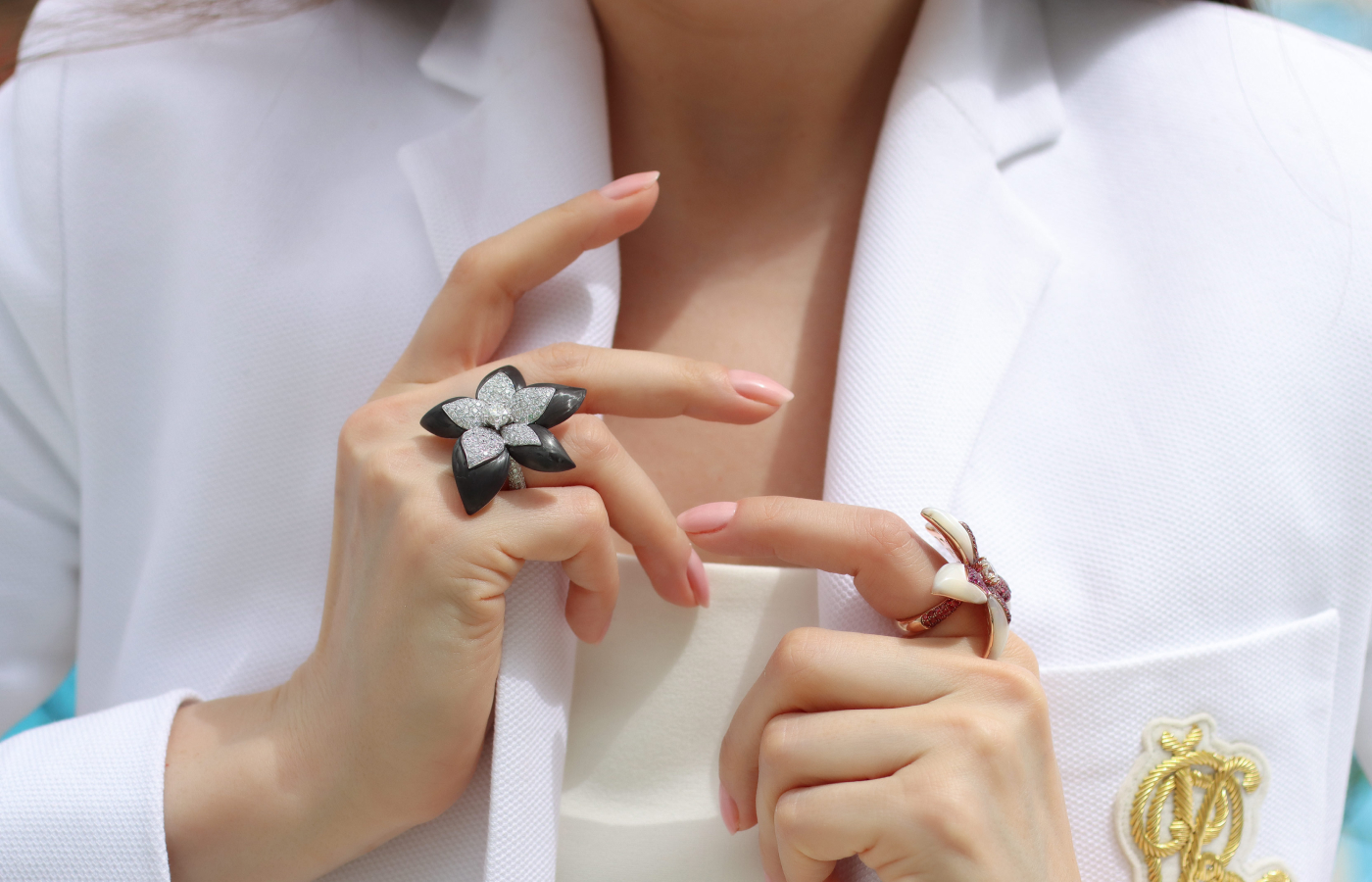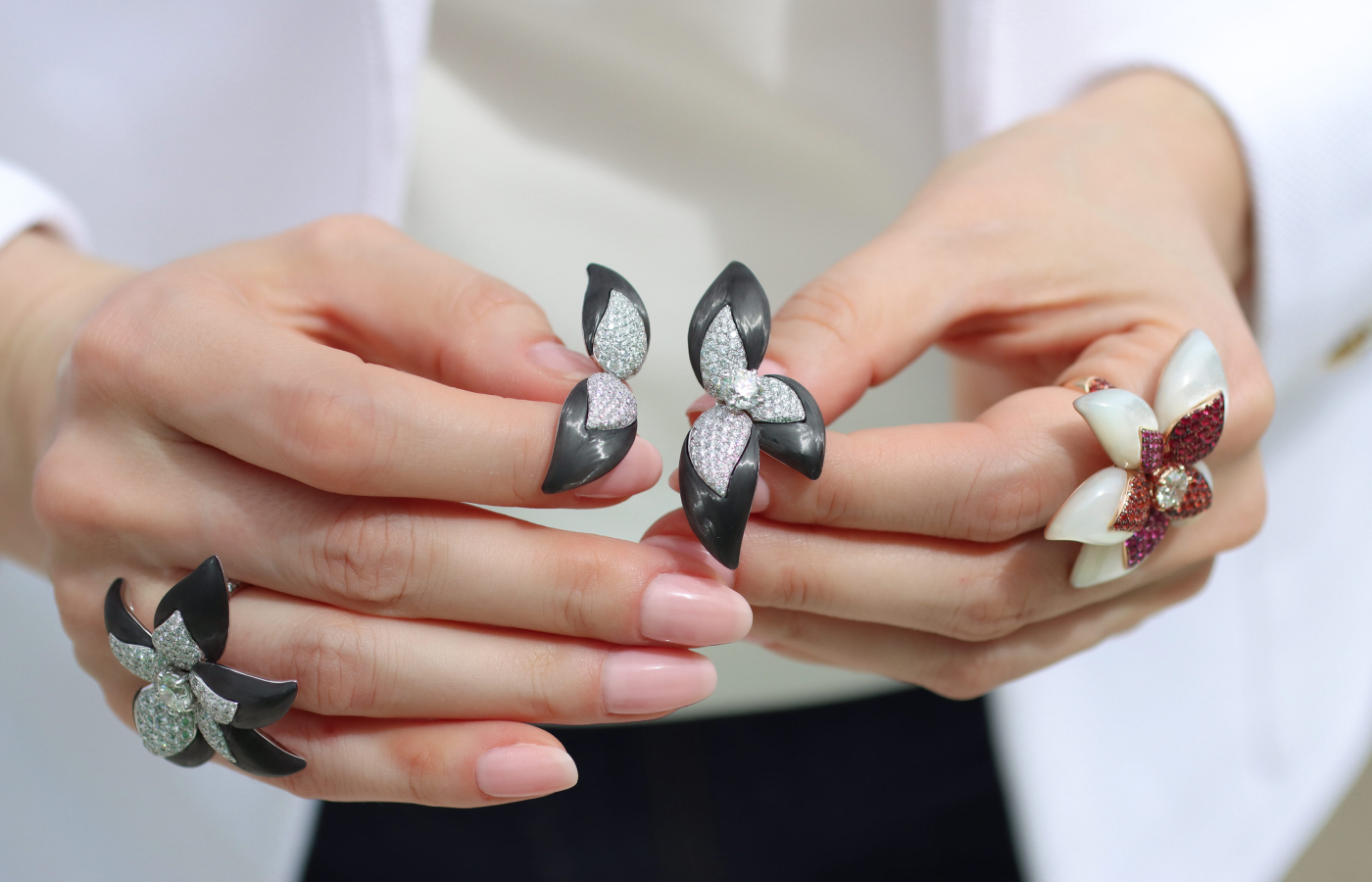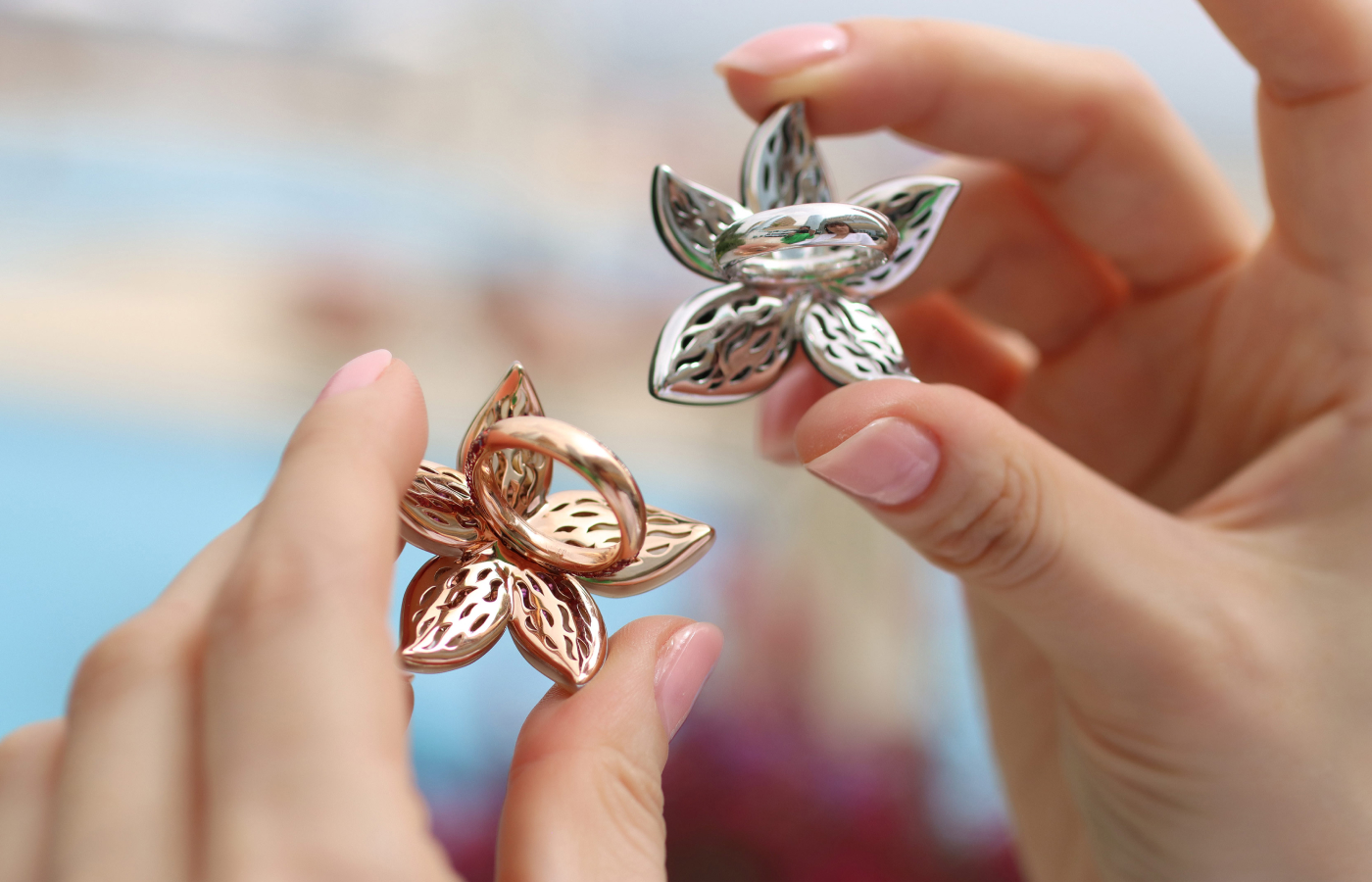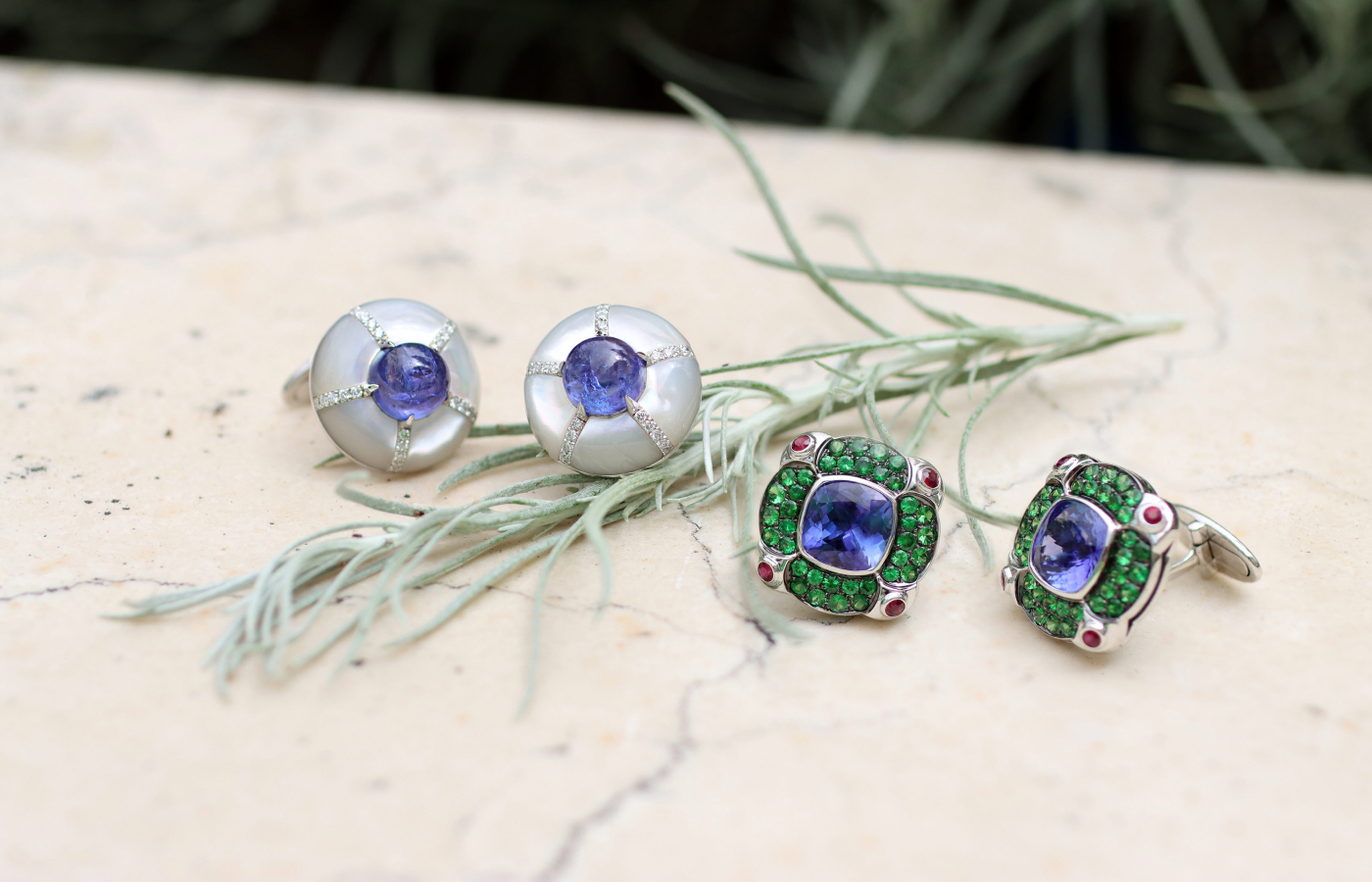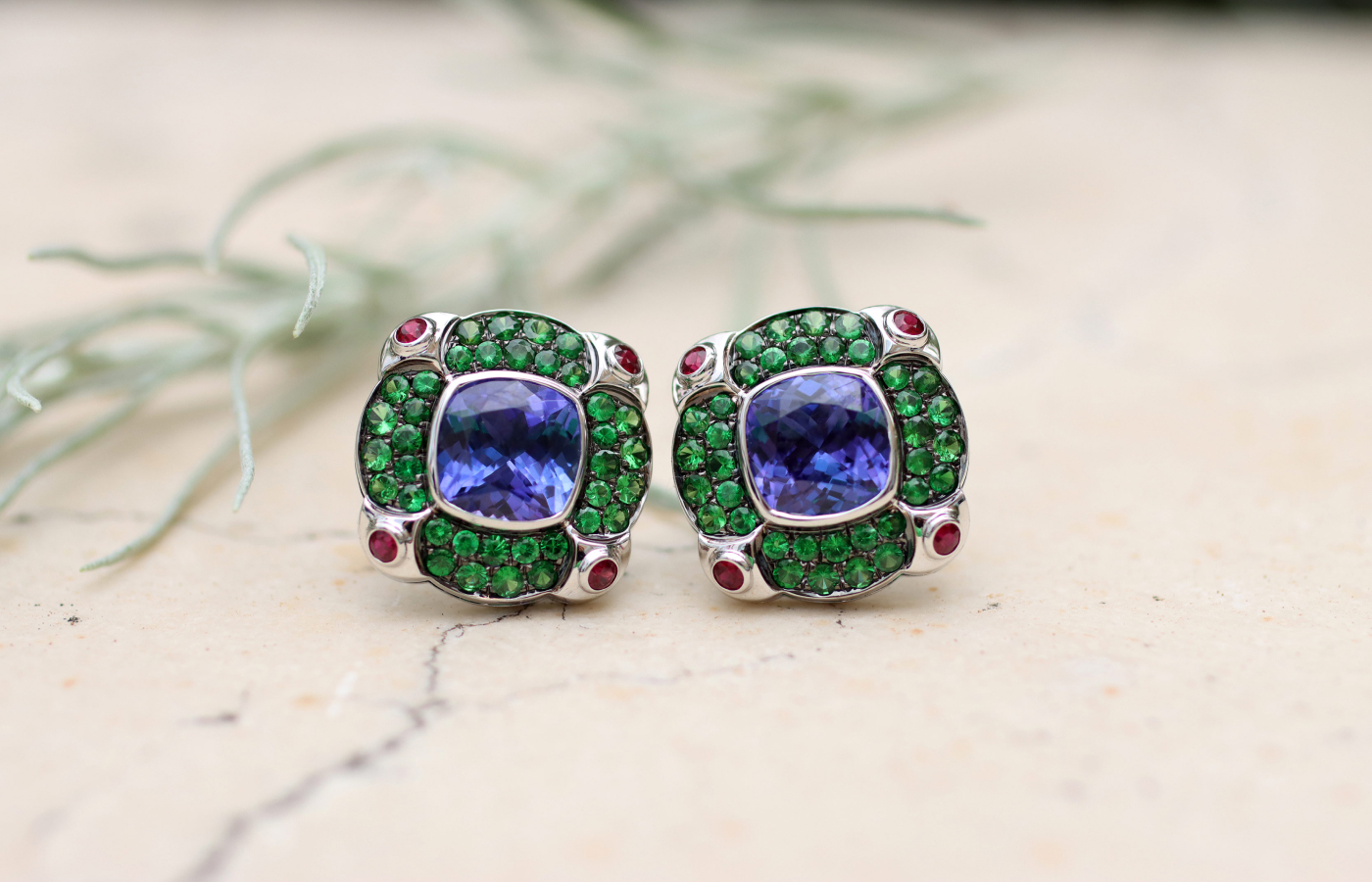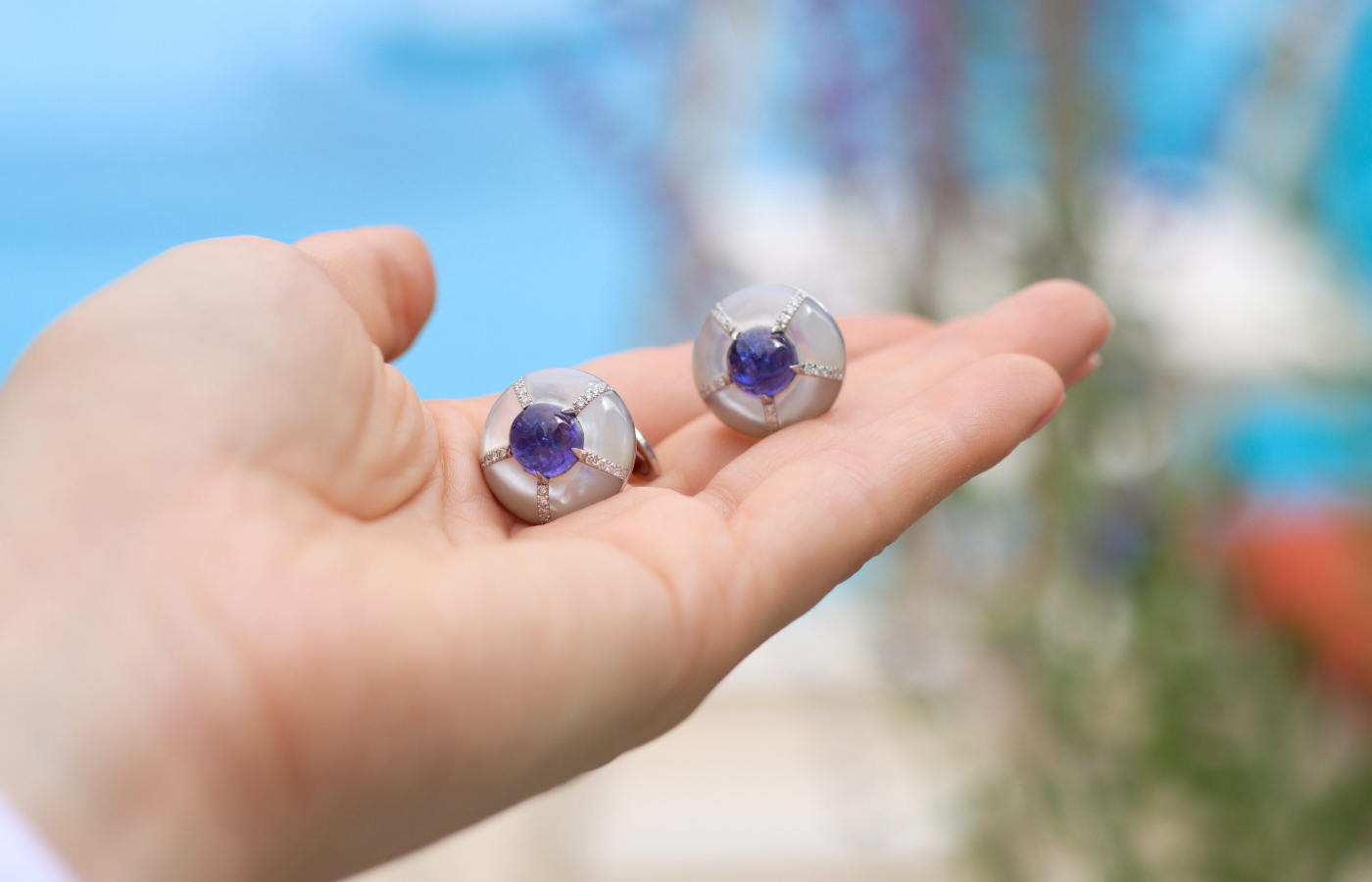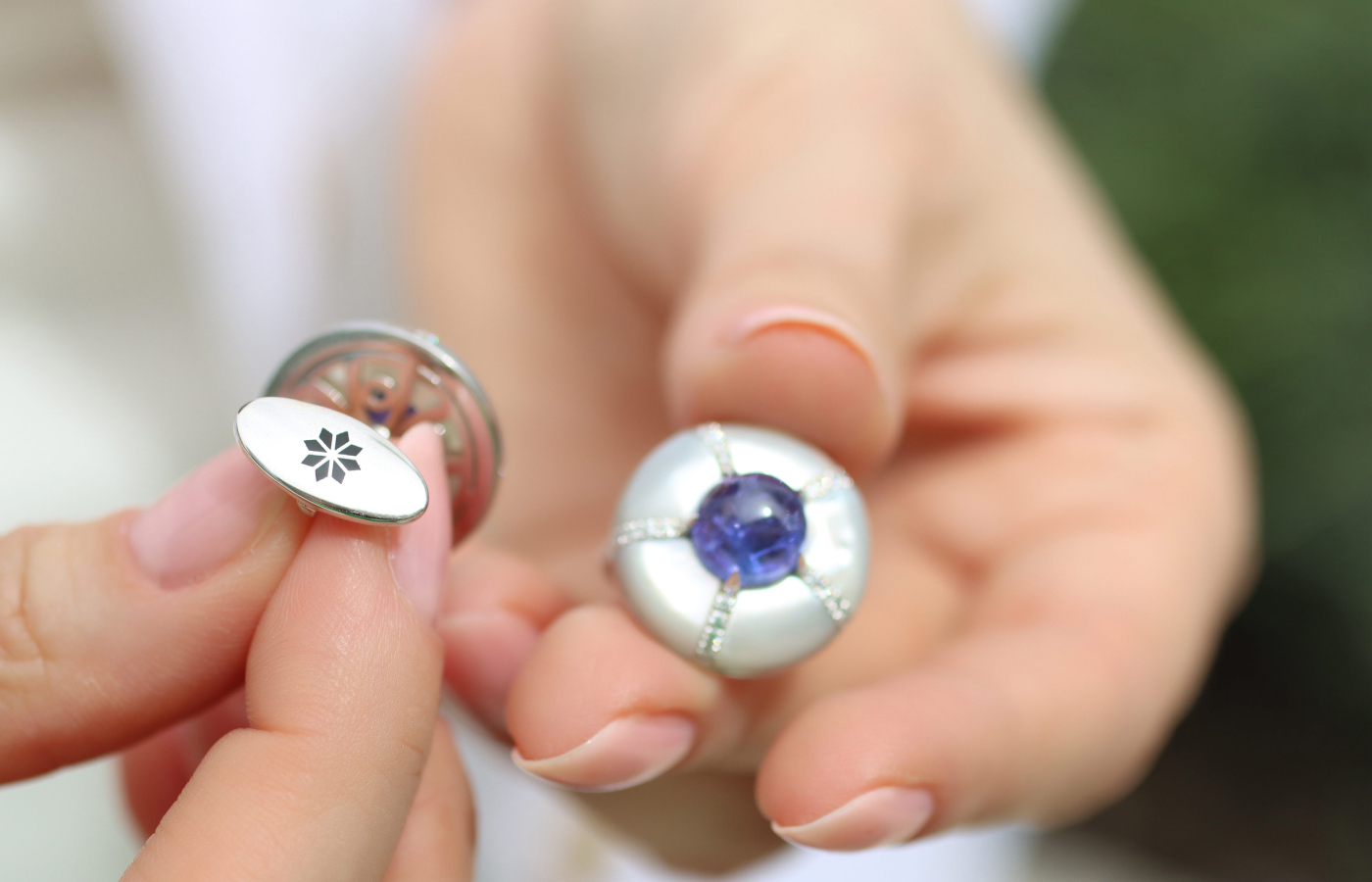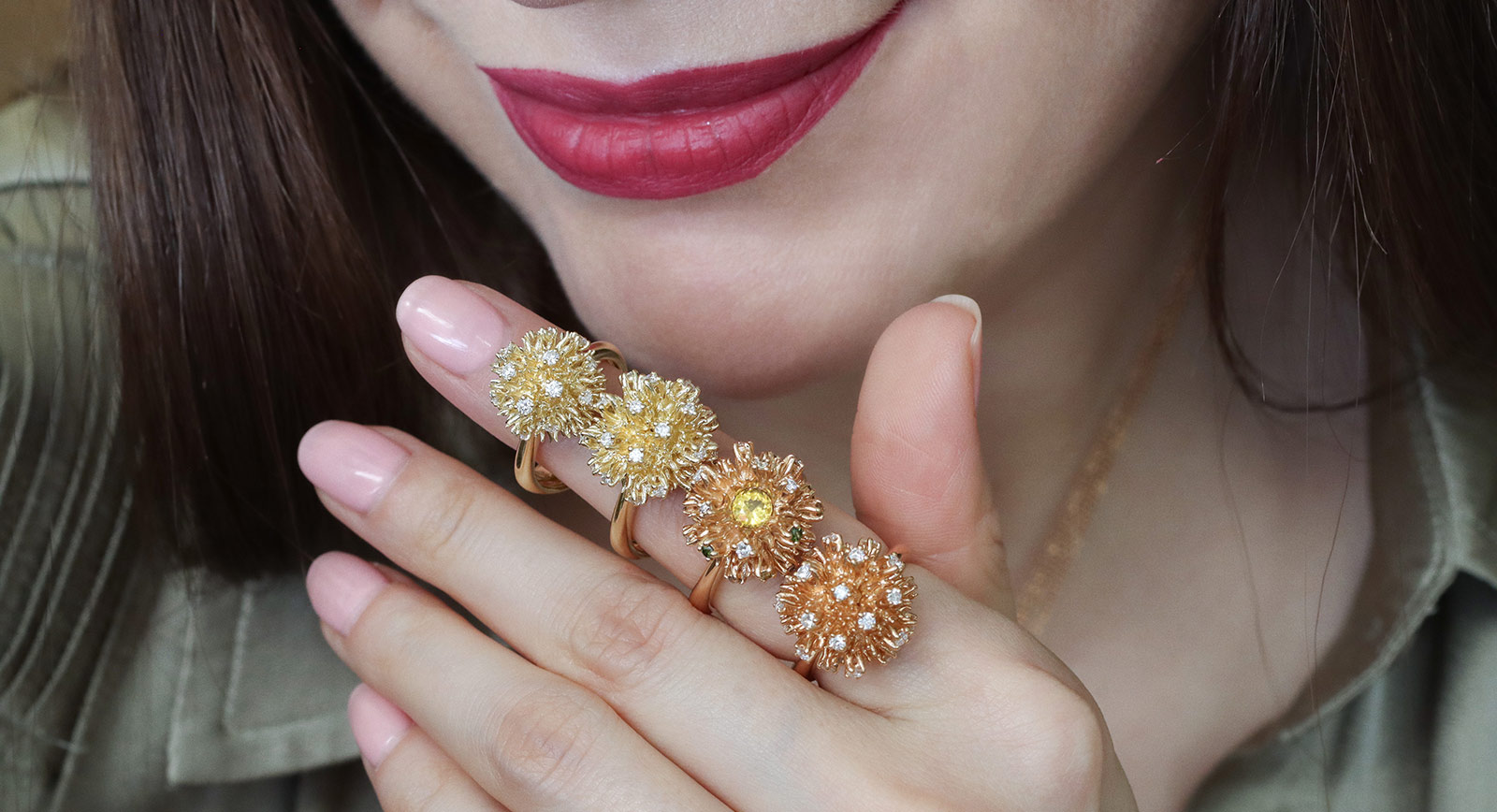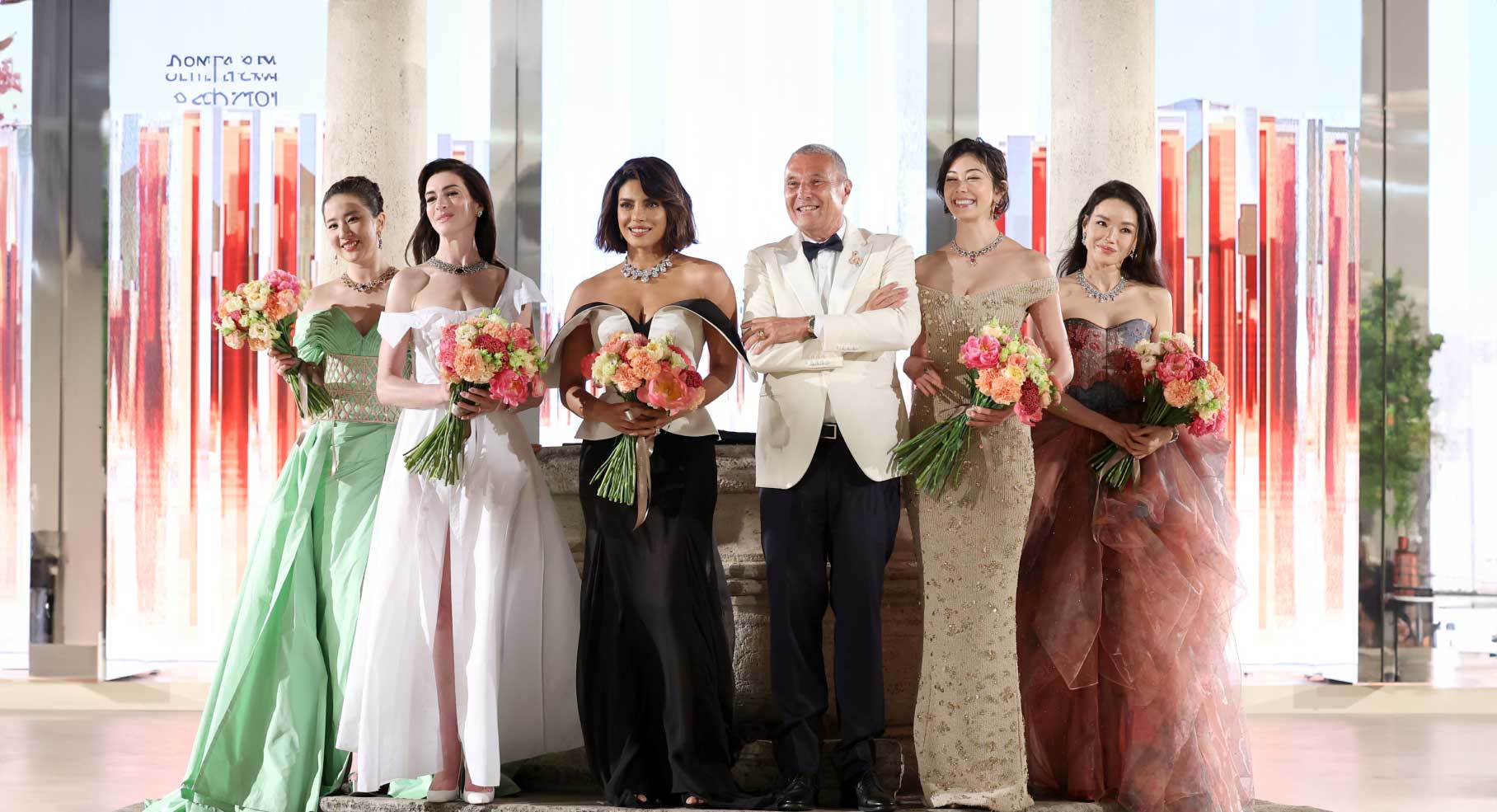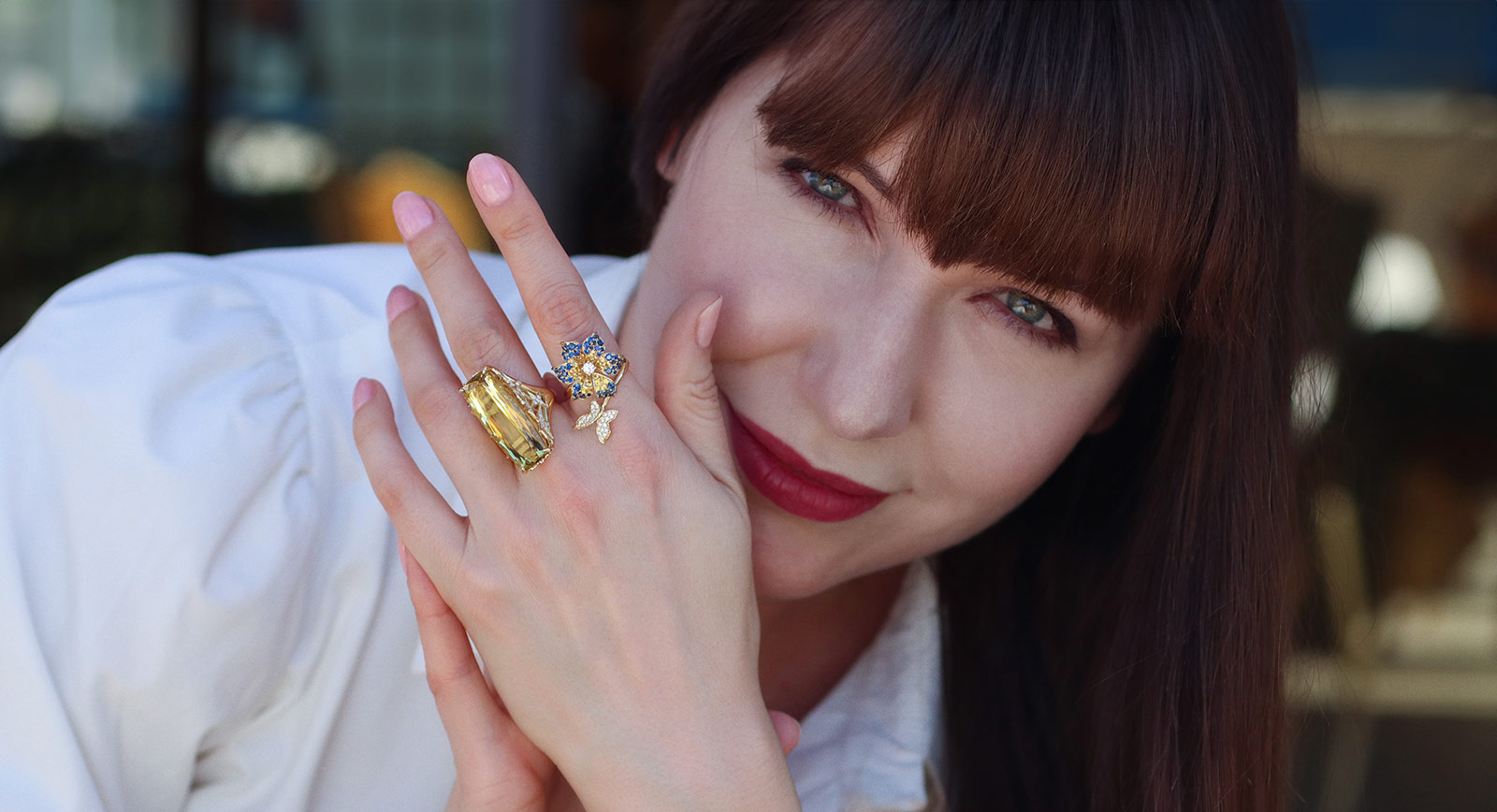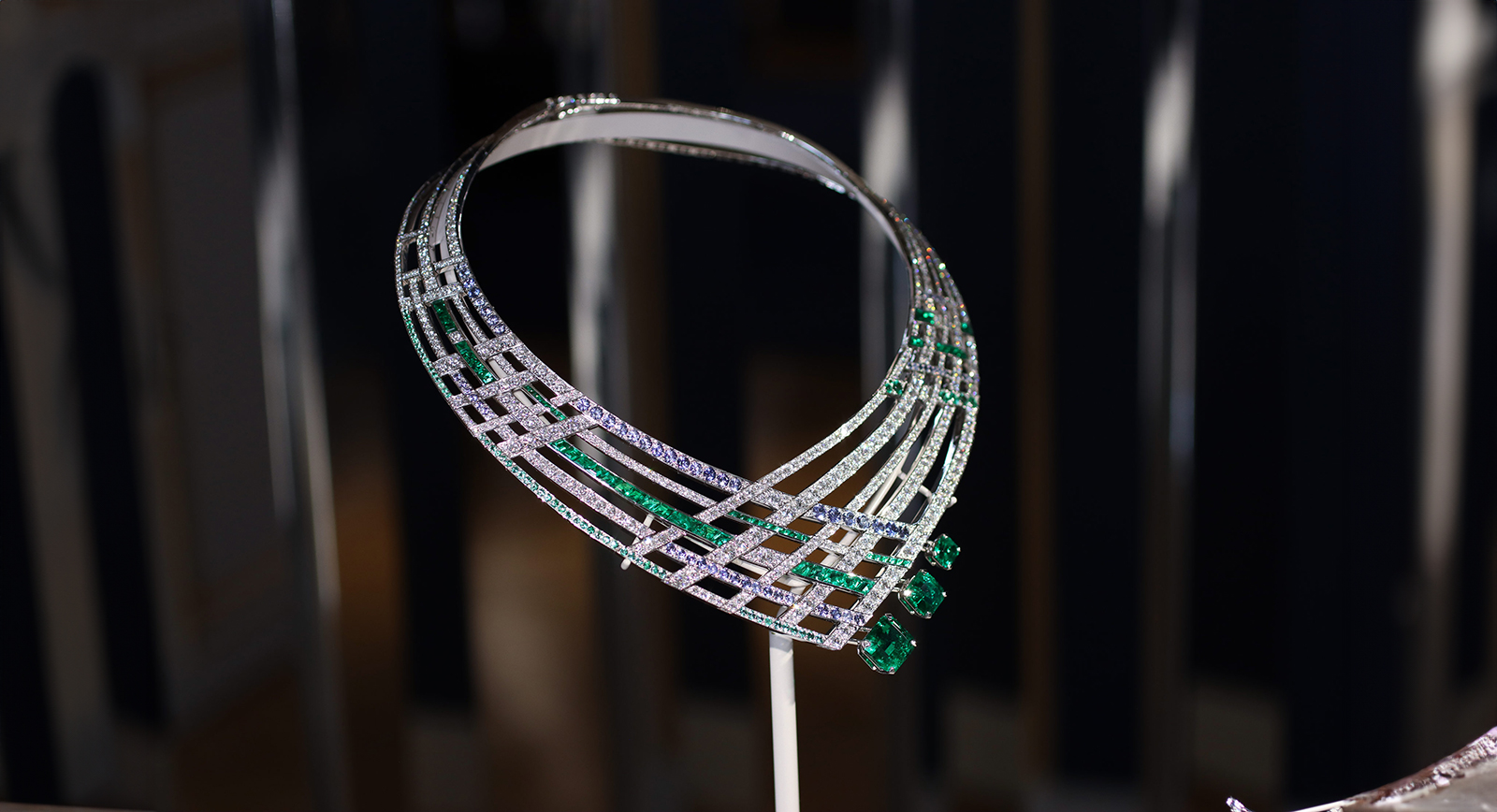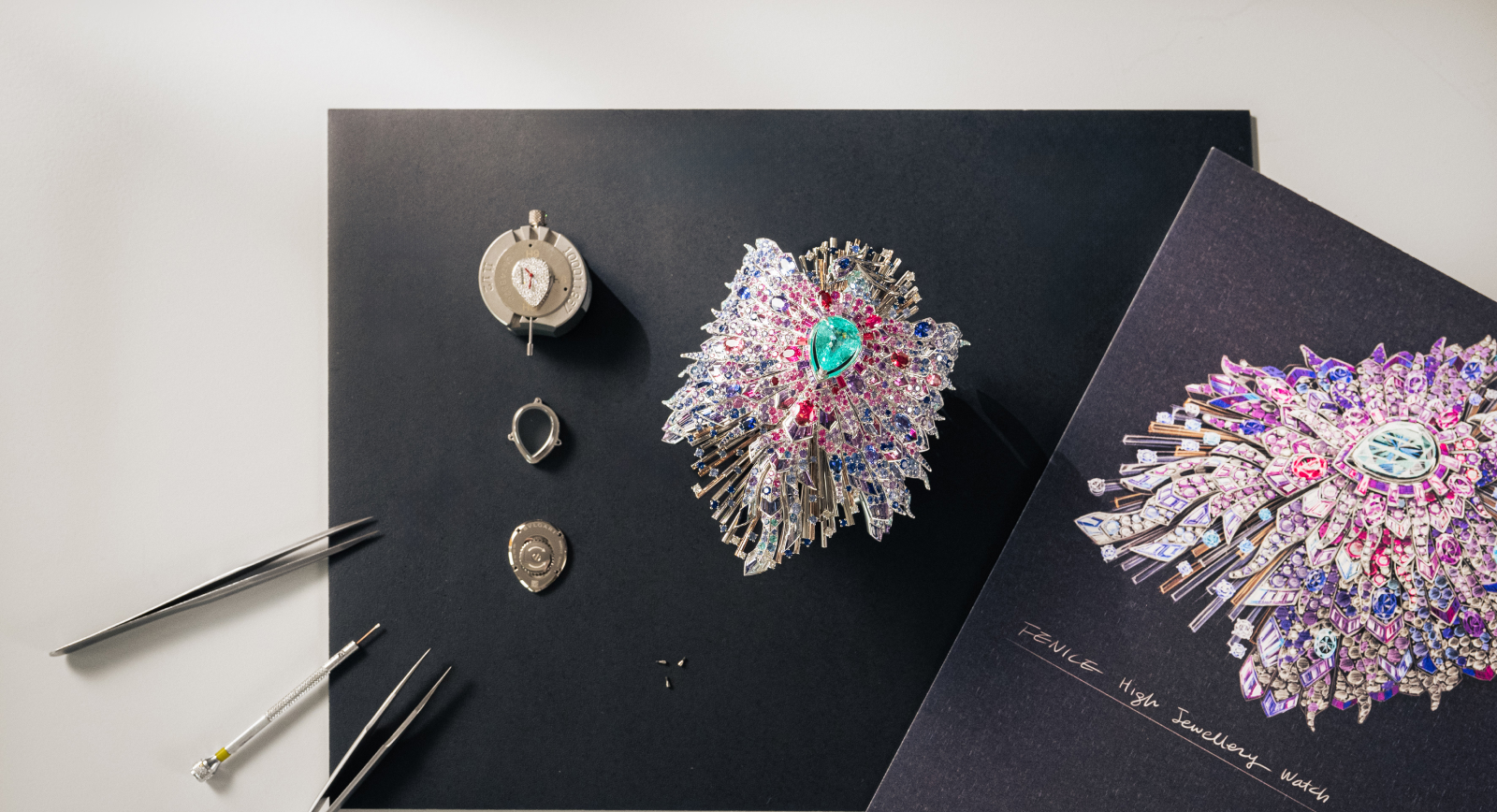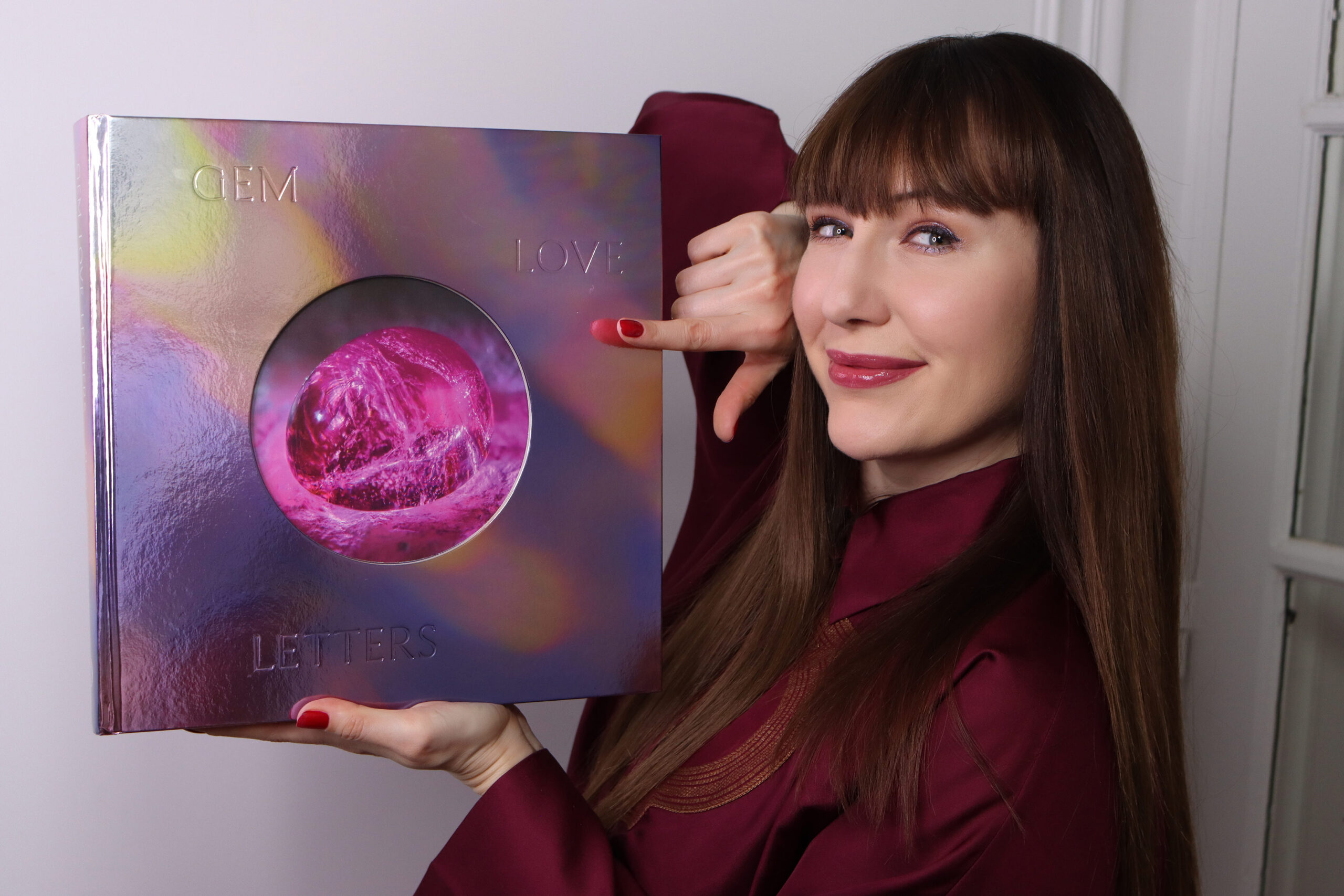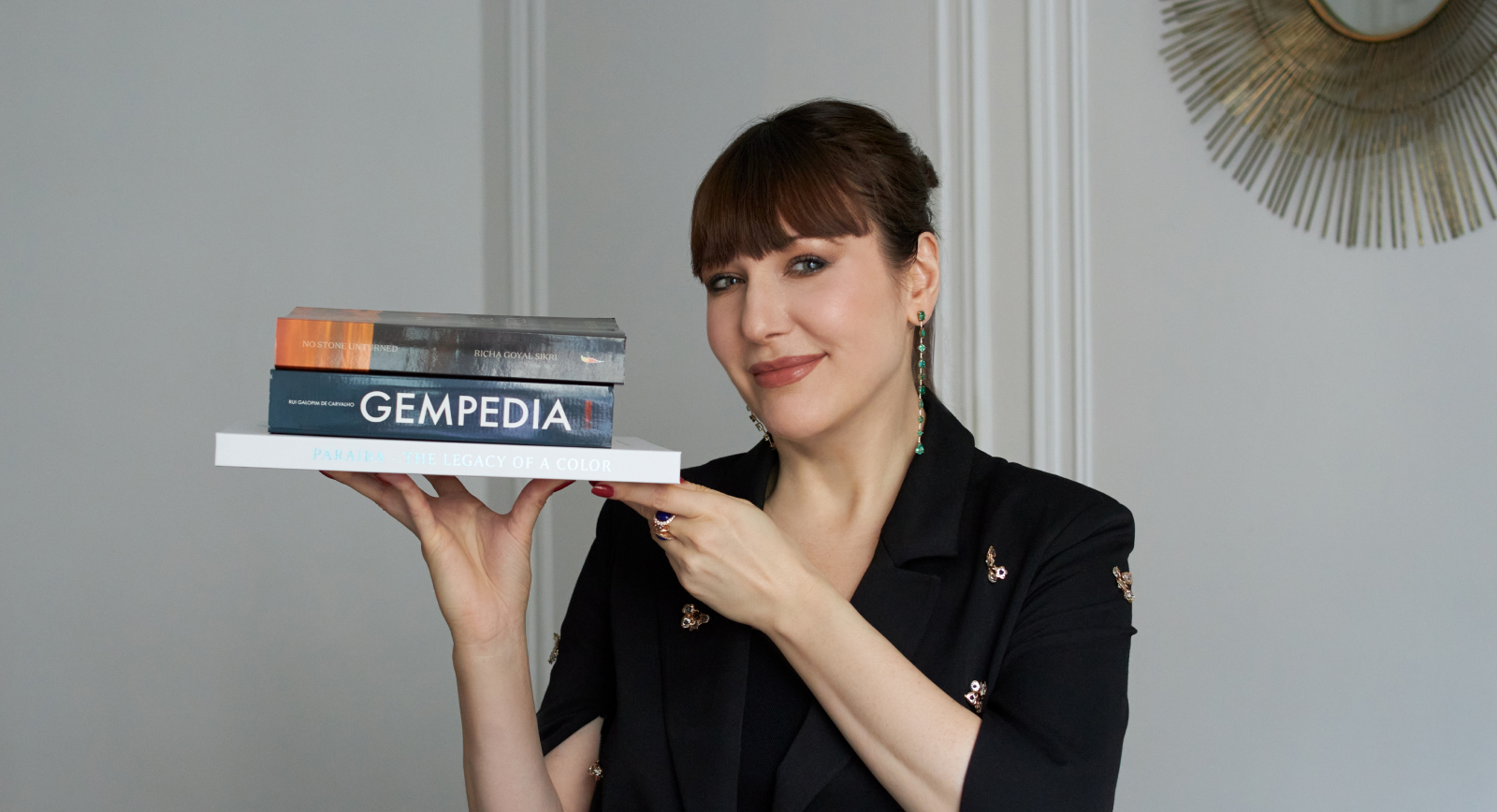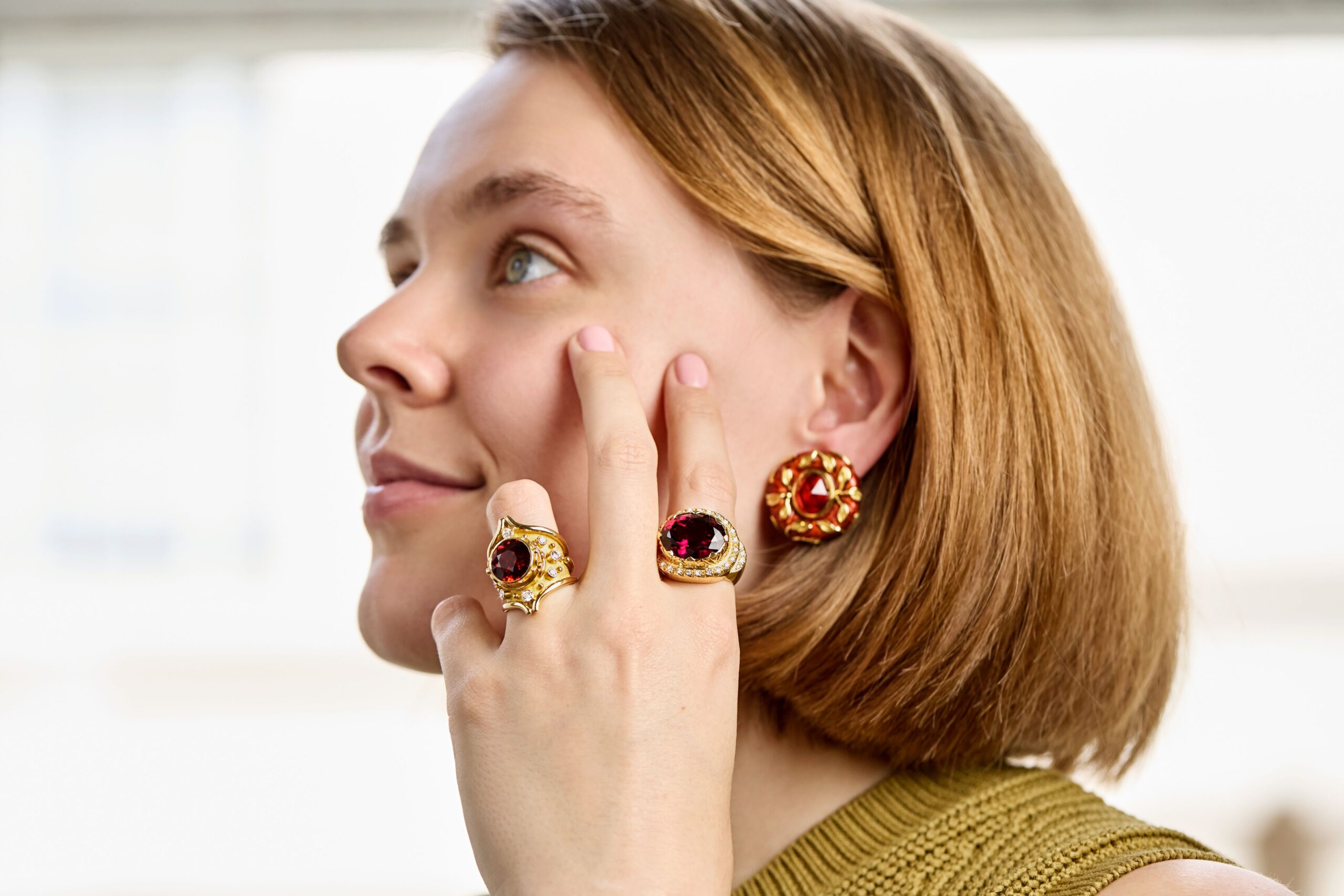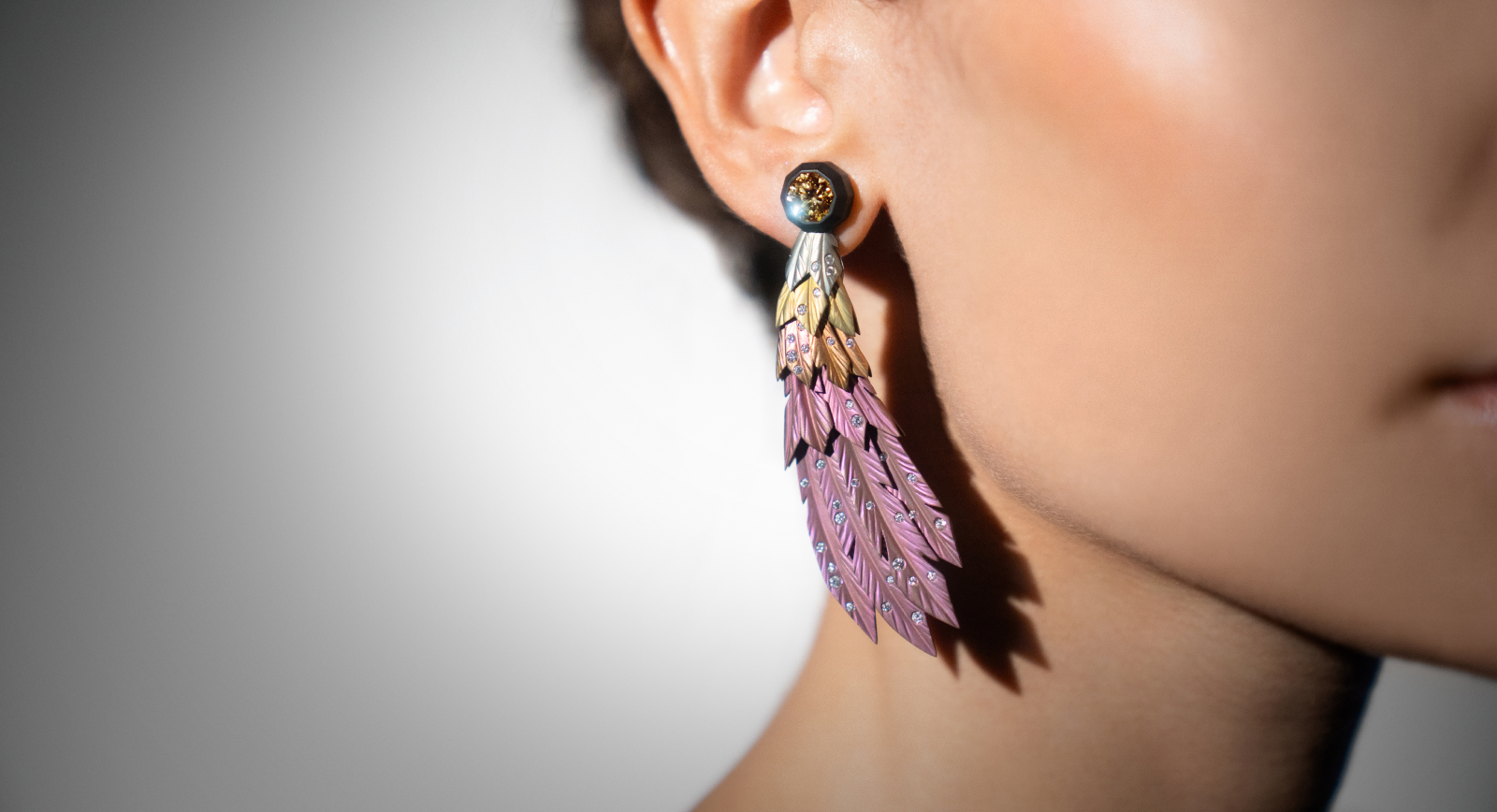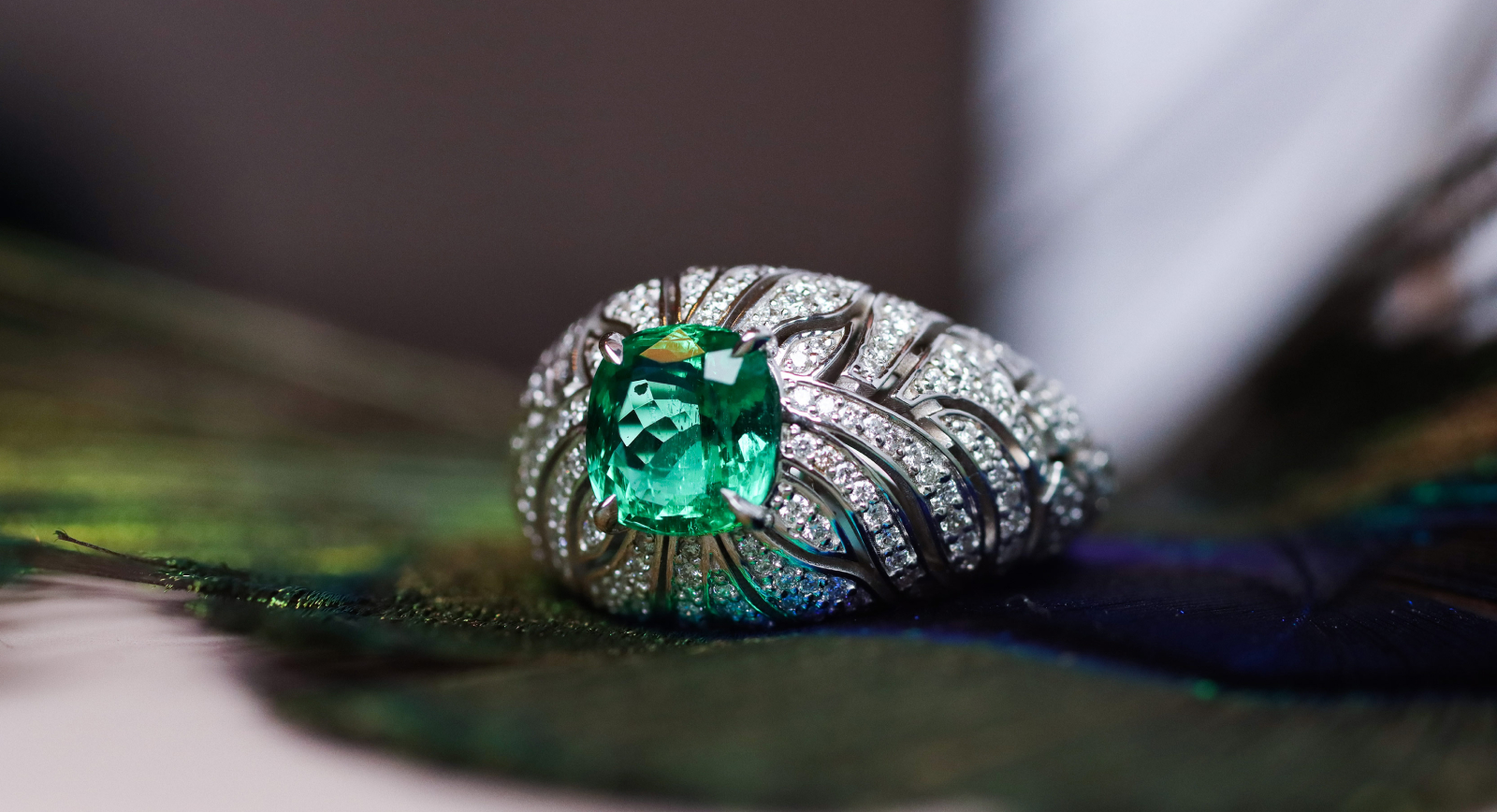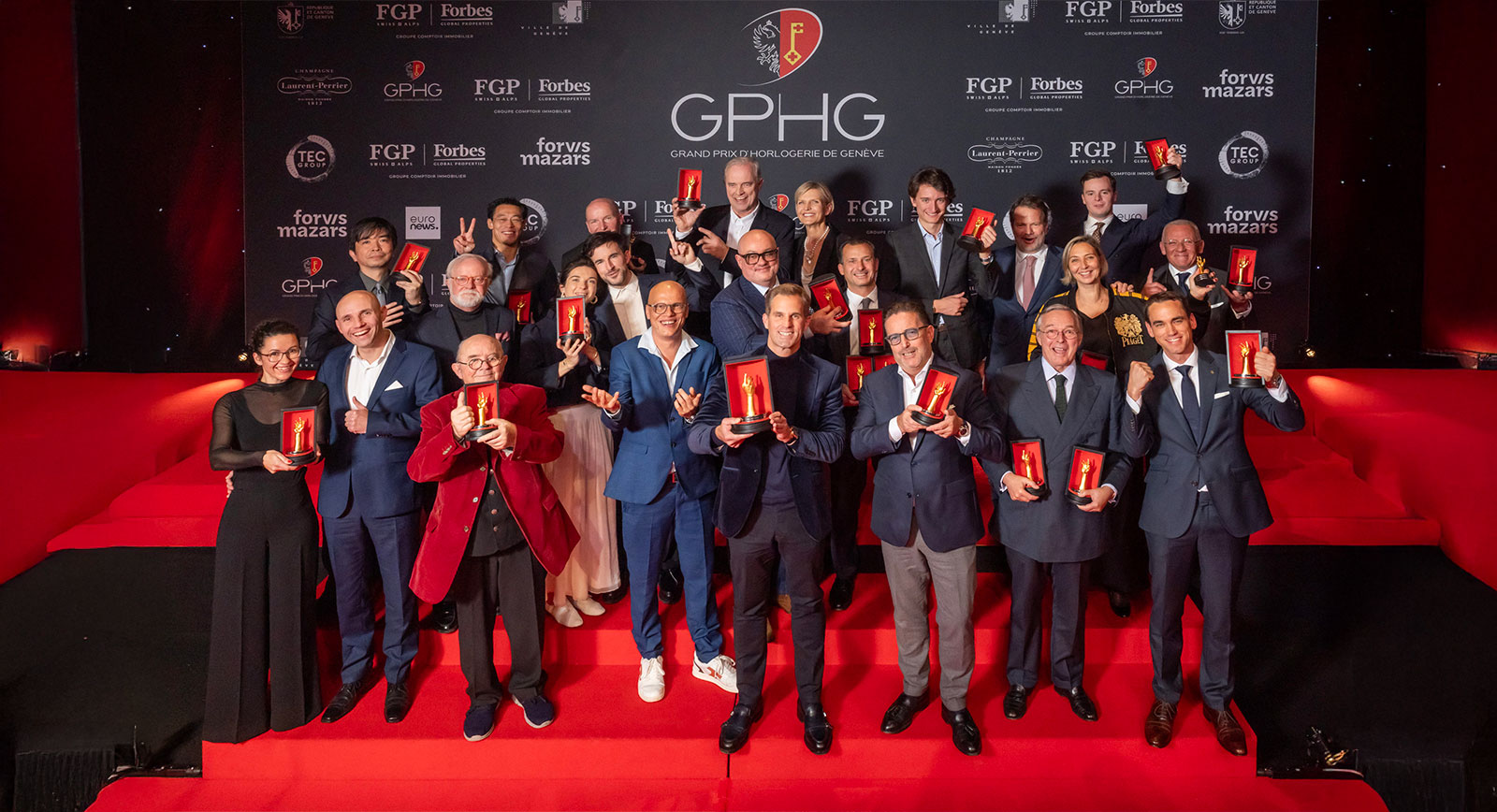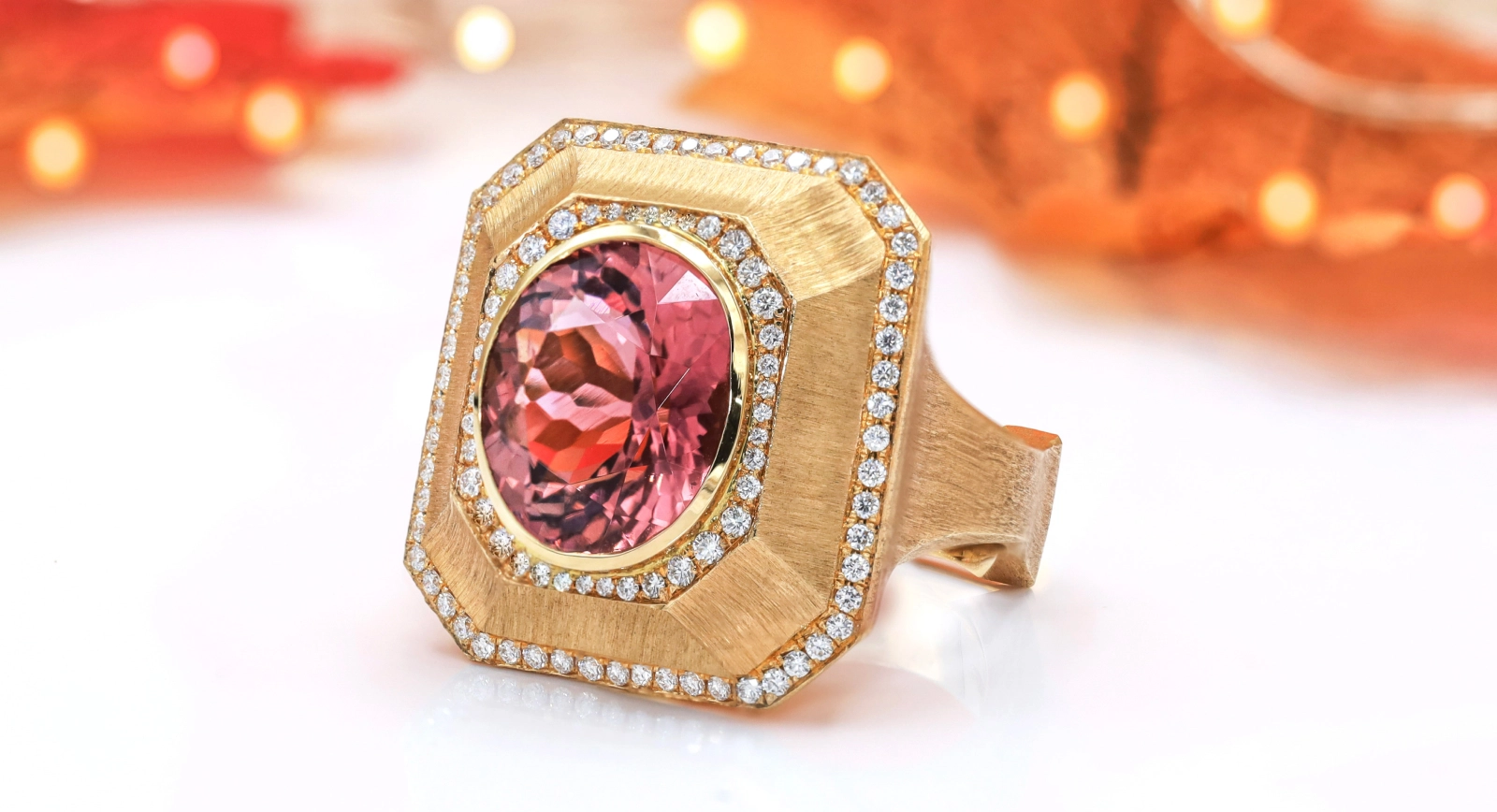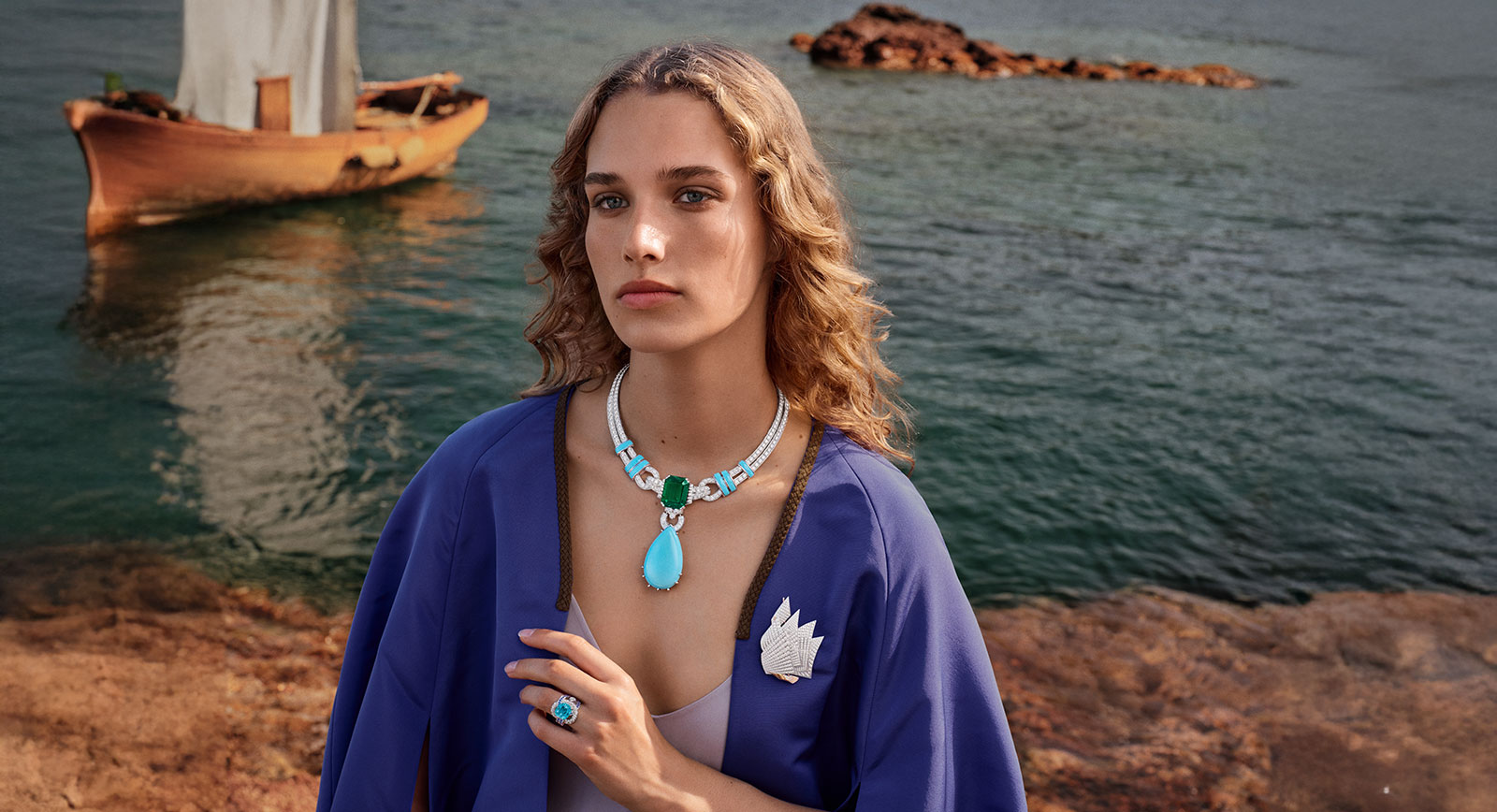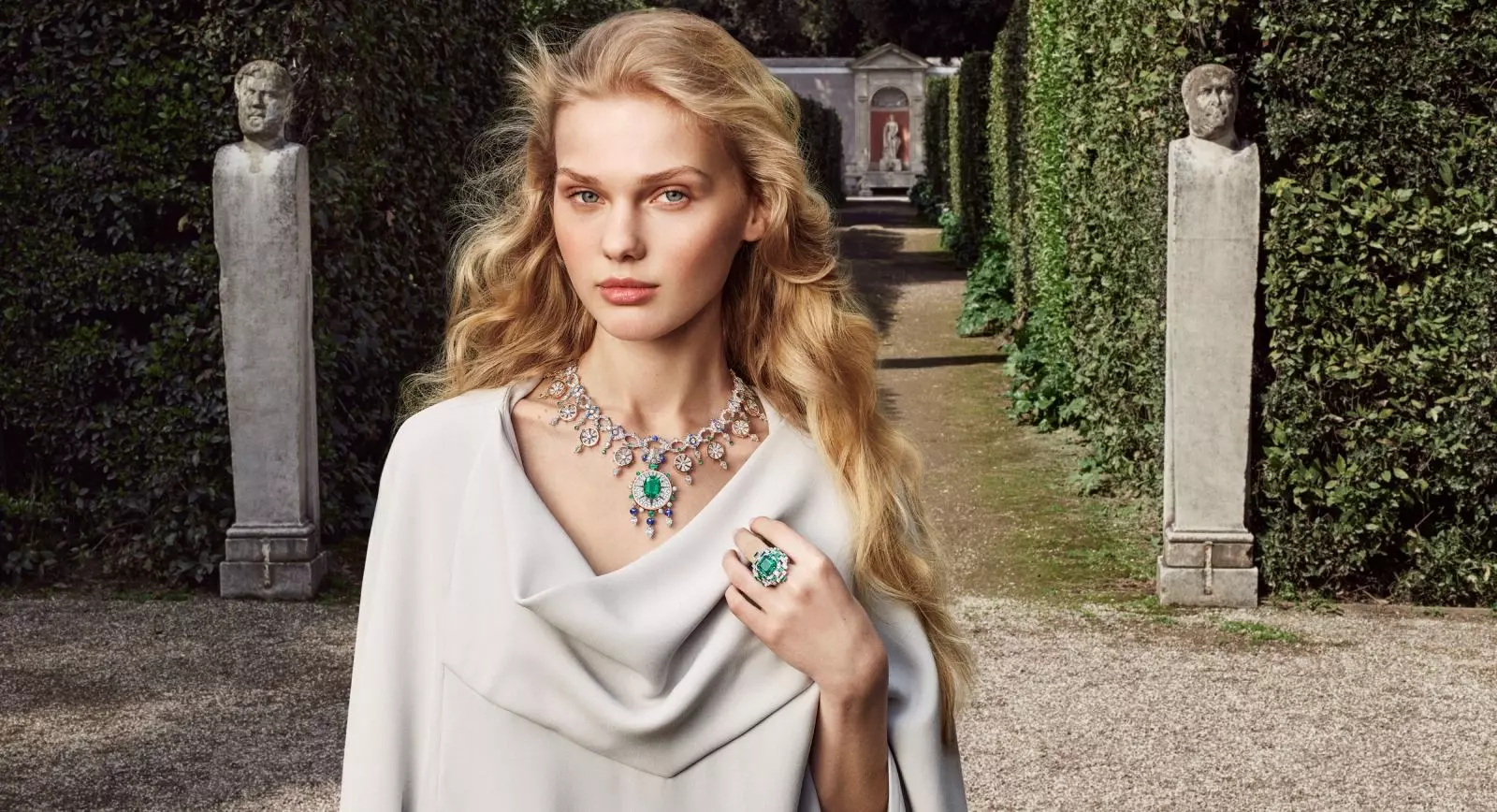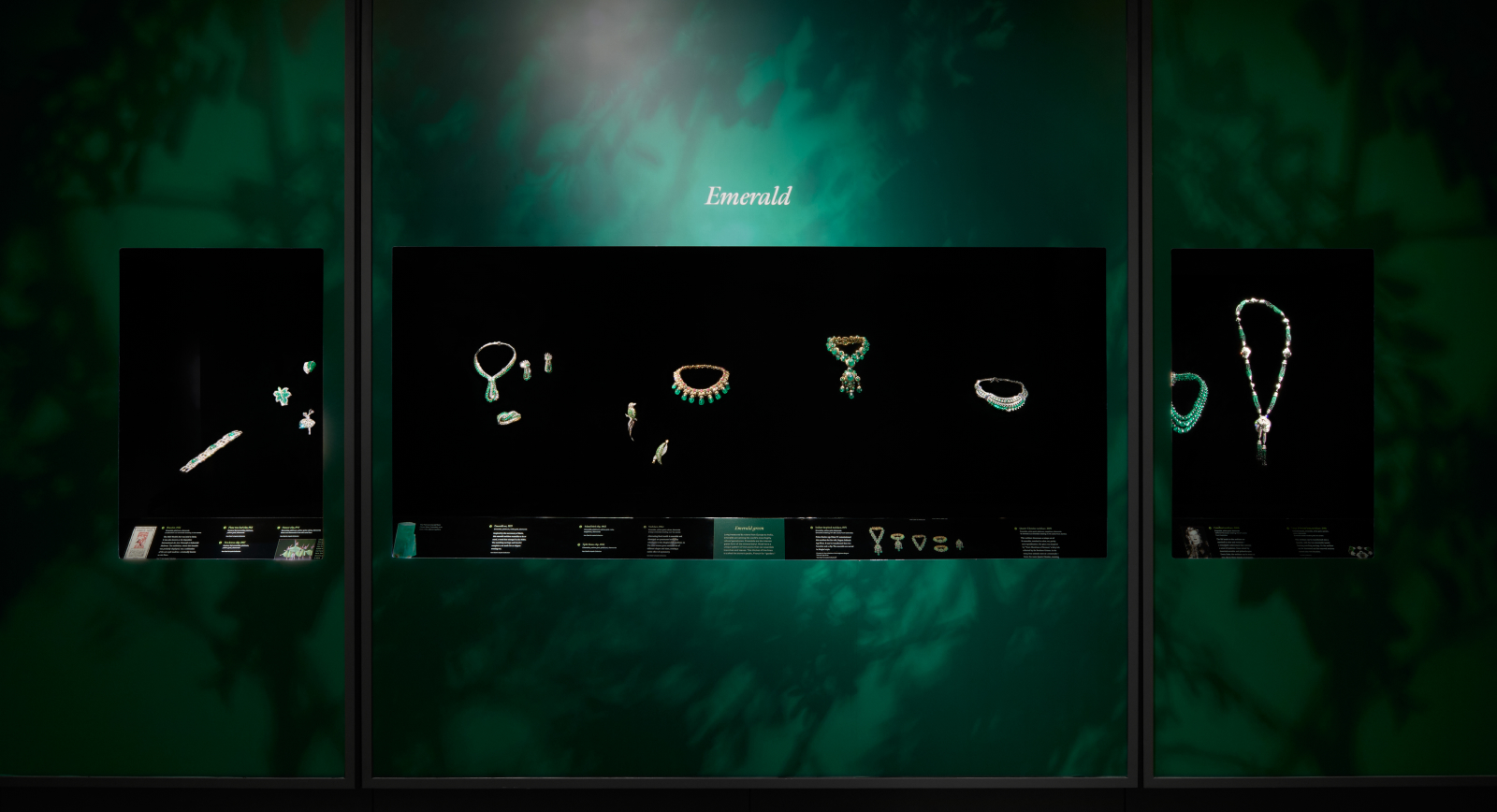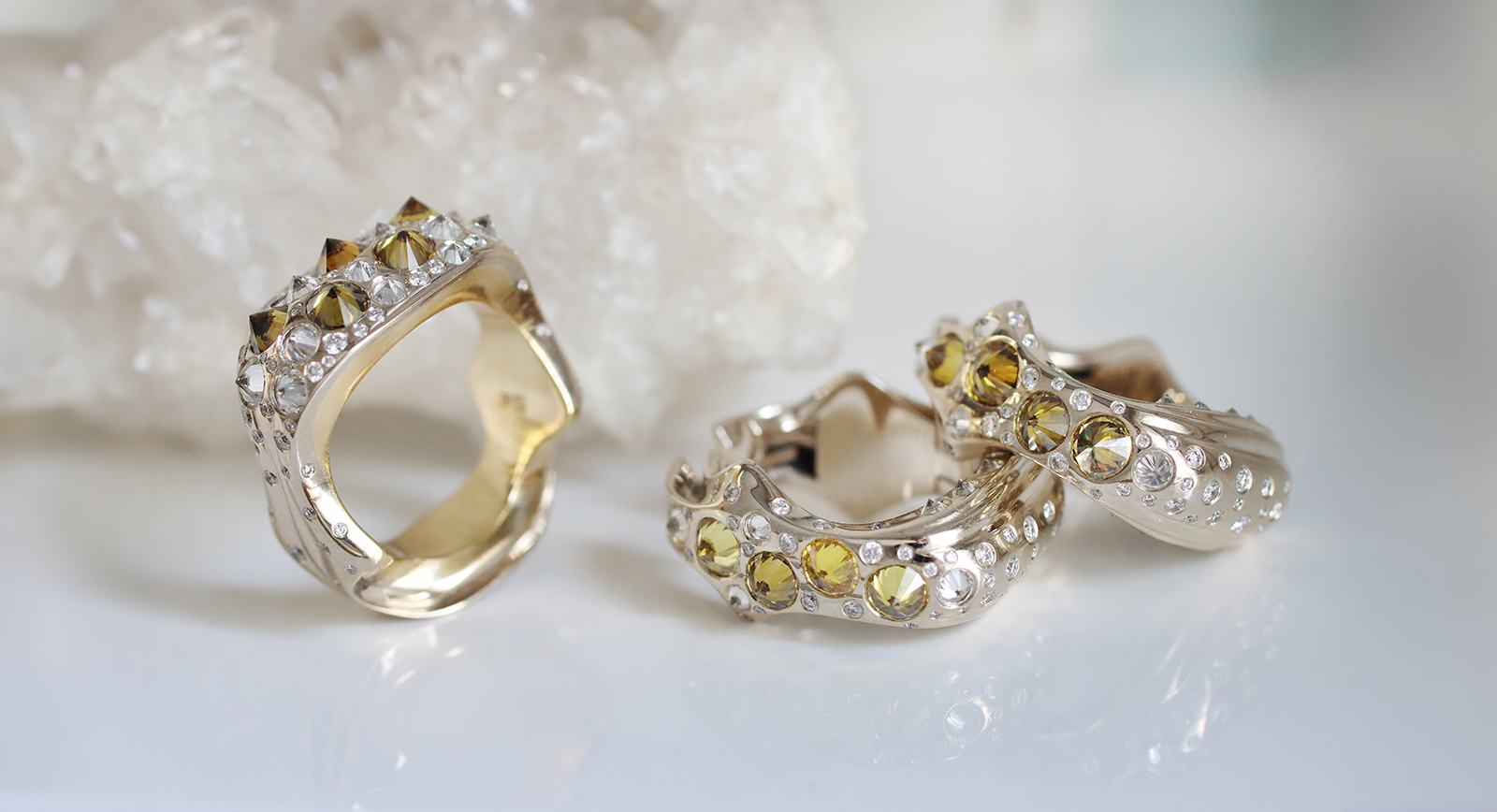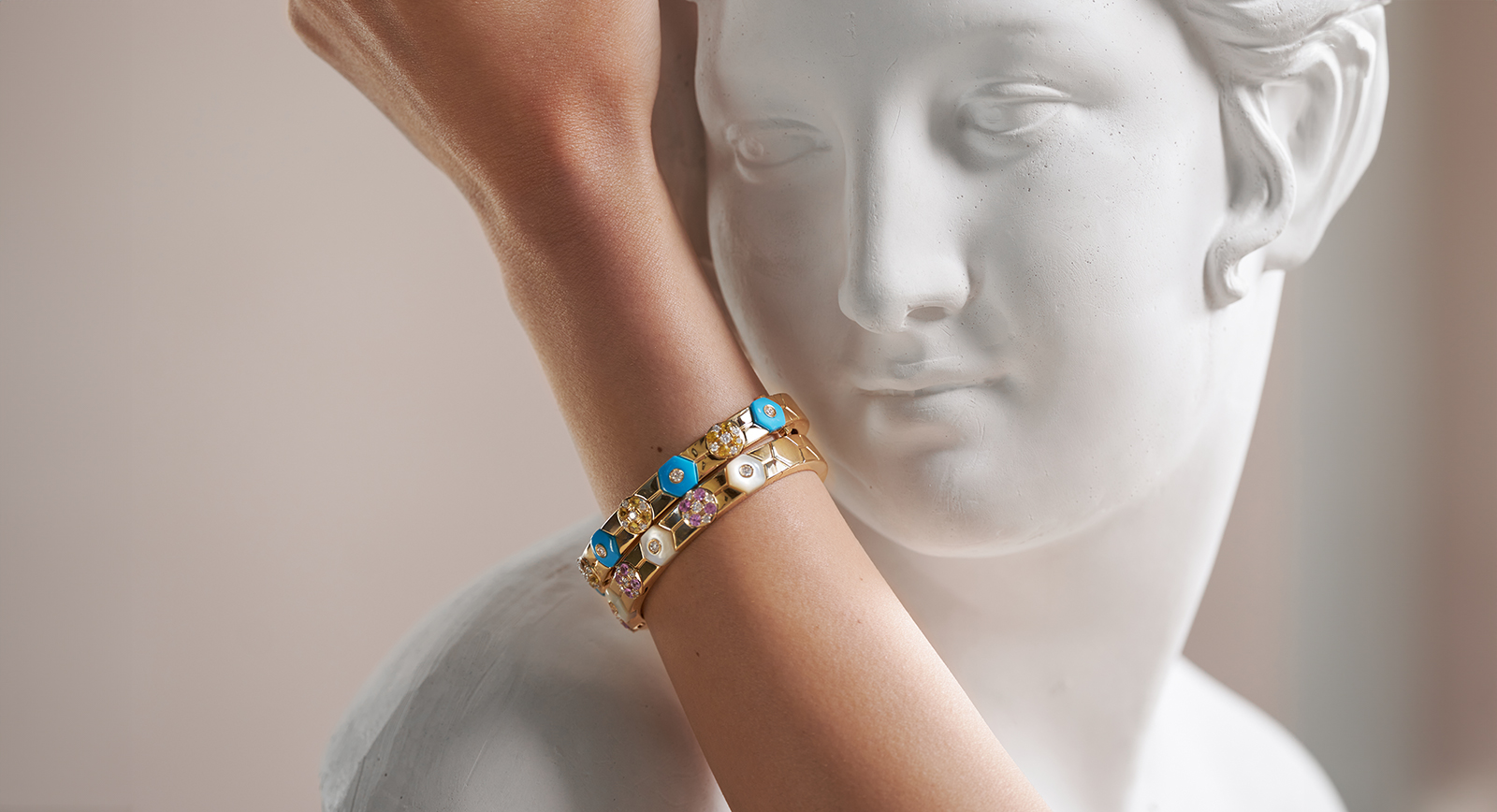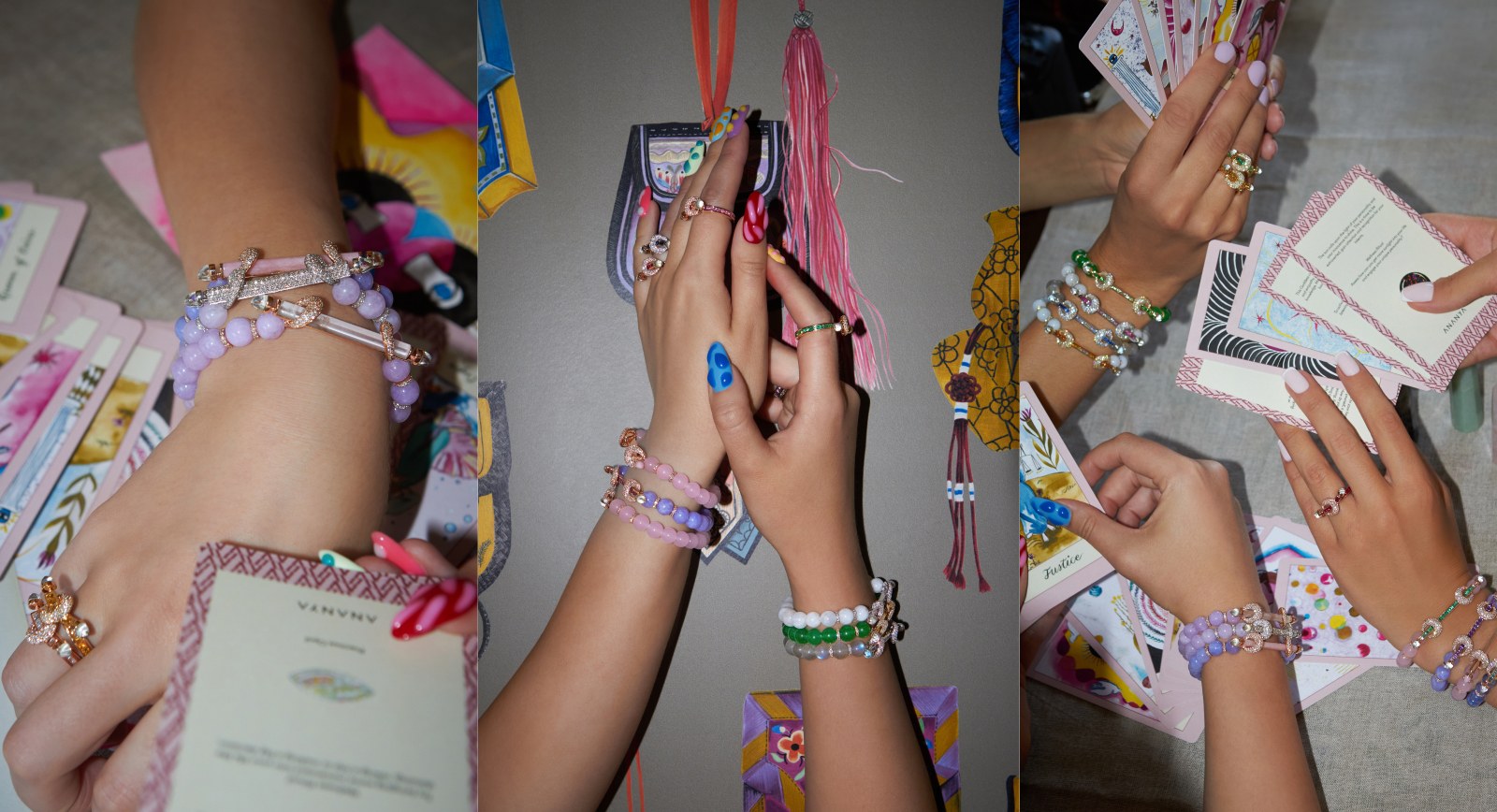
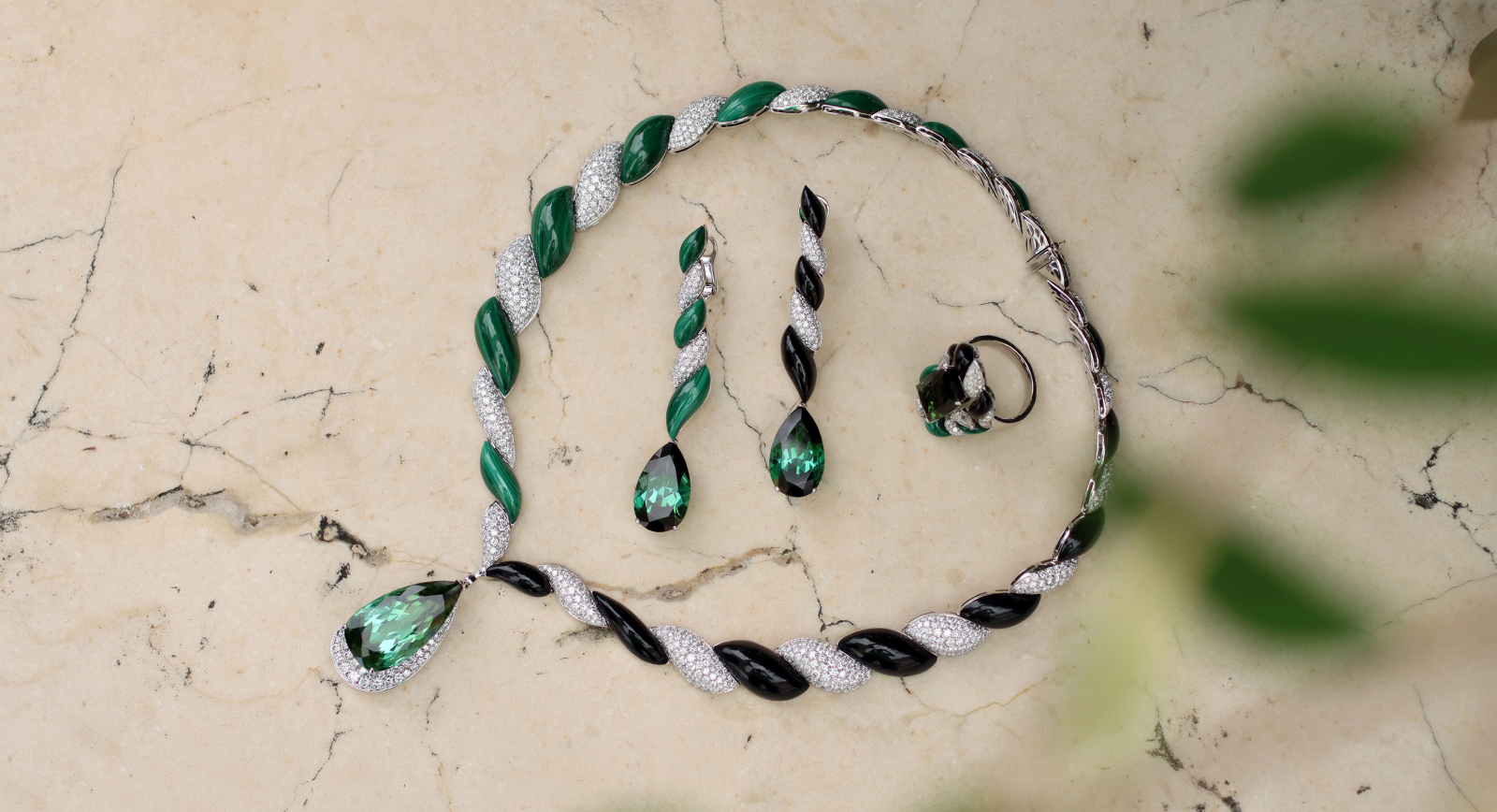
Creative Horizons: The Italian Jewellery-Making Techniques of Maison J’OR
Over many years, the best brands begin to develop their own creative energies – a type of unique personality that infuses each piece right down to its raw materials. In the case of Roman jeweller Maison J’OR, its identity is all about the balance between traditional techniques, like pure Italian goldsmithing, age-old inlay and gemstone carving, and modern materials like titanium and carbon fibre. To find out more about the methods of craftsmanship that have helped to set this nearly 40-year-old brand apart, I spoke to Lorenzo Gelpi, the son of founders Attilio and Barbara Gelpi, to discuss the bench skills that characterise the essence of J’OR…
If you have been following this website for some time, you may recall an article introducing you to Maison J’OR published earlier this year. In this introduction to the brand, I spoke about the beautiful ergonomics of its cuff bracelets, earrings and rings, which really hug the body’s natural curves and exemplify, at least in my opinion, the quintessential characteristics of Italian craftsmanship. It is always dynamic, always comfortable, and always fuelled by a sense of extravagant femininity. From this initial meeting, I was taken by one piece in particular – a blue titanium and diamond-set cuff bracelet and matching ring – that oozed elegance despite the modernity of the materials. All this had me promising that should the opportunity arise again, I would ask the Gelpi family about the jewellery-making techniques that allow them to produce such meticulously constructed jewels.
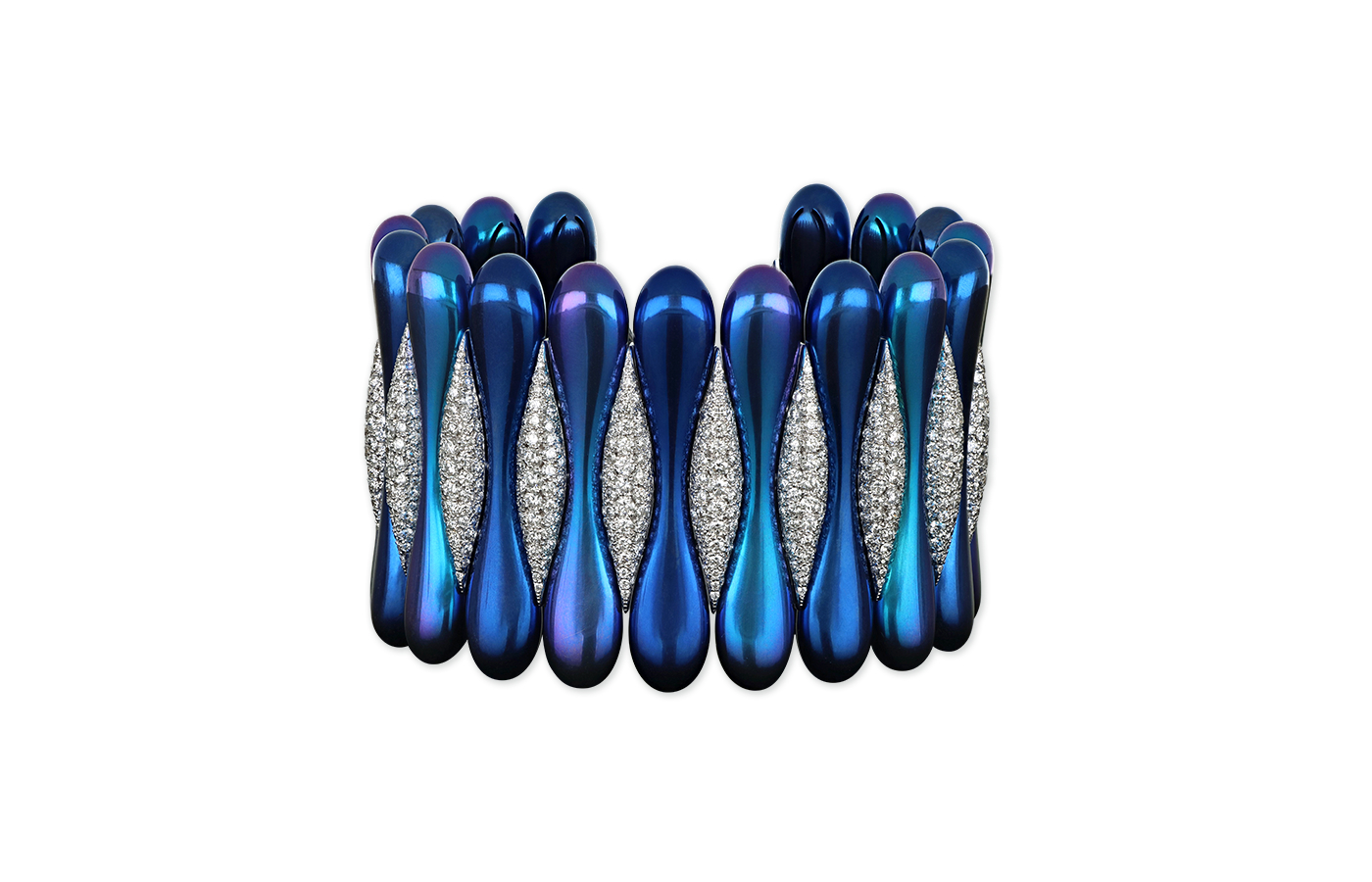
Maison J’OR Fluid bracelet with 14.39 carats of diamonds in 18k white gold and blue titanium
Well, jump forward a few months, and here we are! Lorenzo Gelpi has indulged my questions about everything from mother-of-pearl inlay (evidenced in the beautiful Gothica collection and Scarlet Kiss suite) to carbon fibre in the Lilium collection and the evolution of jewellery as an art form. Below, you will find the highlights from this enlightening conversation, which serves as a reminder that jewellery-making is a living, breathing journey, not simply a sparkling destination.
Katerina Perez: Firstly, what would you say defines the Maison J’OR aesthetic?
Lorenzo Gelpi: Our aesthetics really express the values that inspire us in everything we do: the elegance of Italian craftsmanship, which is chromatic and has formal sensibilities, while also embodying the admission of beauty into everyday life. We create jewellery that shows, to those who wear it, the manual skills required by our master artisans and the empathy with which we engage with the materials and form to build perfection in every detail. This, in turn, leads to perfect work. And, finally, the overall vision is for us to draw continuous connections between tradition and contemporary jewellery evolution.
KP: Can you pinpoint some of the specialisms of Maison J’OR? Why do you prioritise these techniques of craftsmanship as part of your brand identity?
LG: Certainly, the use of titanium represents a new frontier for jewellery due to how difficult it is to process, the chromatic colour combinations it can lead to, and, naturally, the dimensions (thus shape and size) it allows for because of its lighter weight, which can benefit jewellery. Hardstones are another creative horizon we are moving towards as a brand to express freshness and vitality through jewellery. I believe they mirror the characteristics, spirit and attitudes of contemporary women. New materials and semi-precious stones allow us to open new creative channels and present new, seductive perspectives – almost like new ways of being and feeling like a woman.
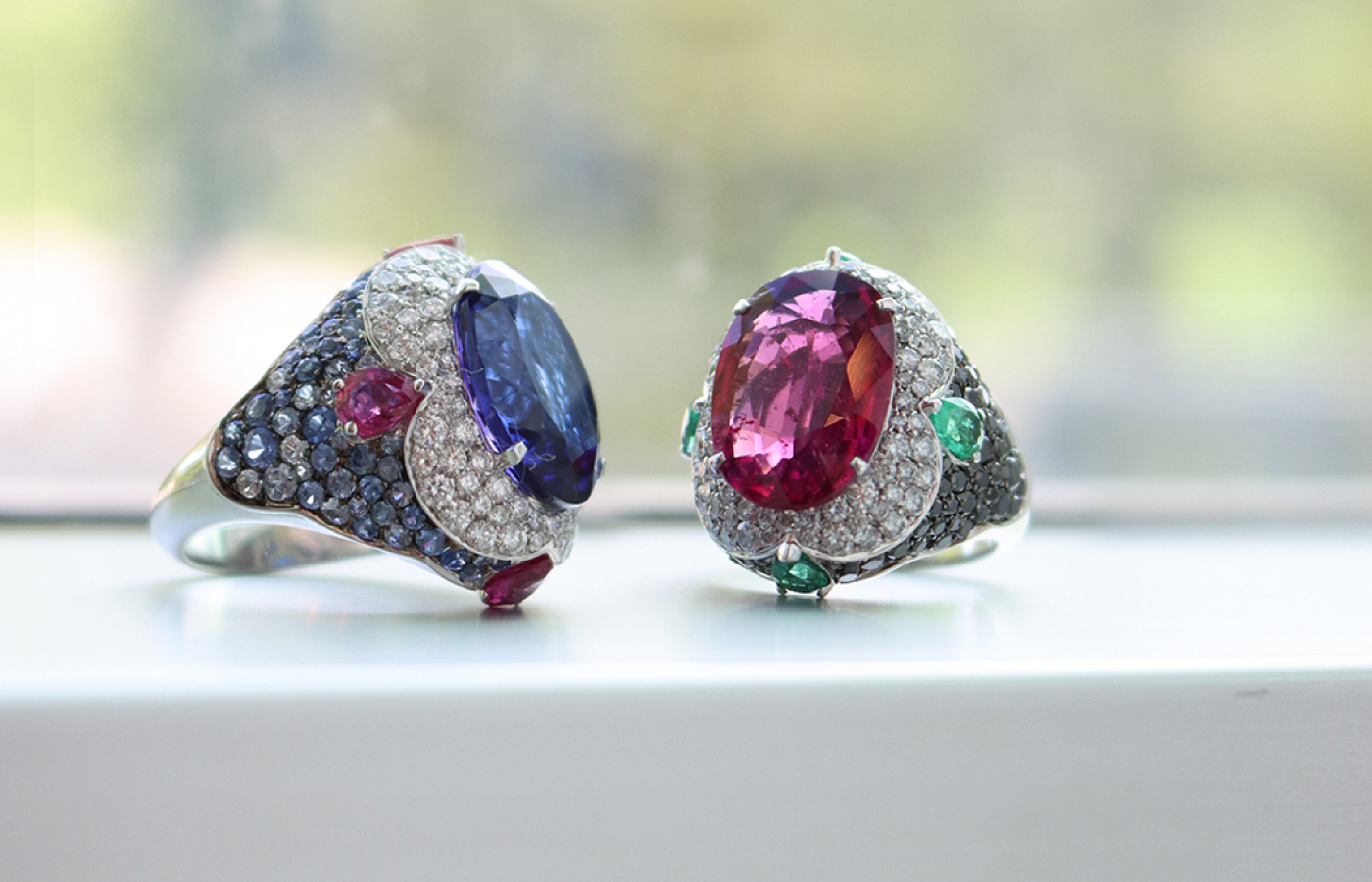
Maison J’OR Merletto collection cocktail rings, including a 9.21 carat tanzanite ring with 1.47 carats of rubies, 1.26 carats of diamonds and 2.01 carats of blue sapphires, and a 6.18 carat rubellite ring with 0.98 carats of pear-cut emeralds, 1.26 carats of diamonds, and 1.40 carats of black diamonds, both in 18k white gold
KP: What do you think separates Italian jewellery-making from other cultures? Are there certain styles, techniques, or systems that really set Italian artistry apart?
LG: In the face of a flattening of tastes and the homogenisation of styles, luxury still convincingly pursues the quest for something novel and nuanced. Italy’s strength lies in its ability to draw on a solid cultural heritage, differentiated by region. We can’t ignore this heritage; we draw inspiration from it in our designs, chromatic compositions, and artisanal techniques. Our cultural uniqueness both distinguishes and strengthens us. We are a country that knows how to express ourselves through jewellery but also fashion, architecture, and design in general. We are also driven to find refinement and pursue perfection. The richness of our cultural history is reinterpreted through J’OR, encapsulating it in a piece of jewellery that is one-of-a-kind.
KP: Would you agree that the art of jewellery-making is evolving all the time?
LG: Science advances, and, with it, so does technology. This leads to an expansion of creativity. At J’OR, research really supports the manual skills of our masters. New metals and new gemstones mean new abilities and skills. However, the human factor remains the indisputable difference between a beautiful piece of jewellery and something unique and different from all others. A large stone or an unusual shape may look good on the surface, but they can mask poor technique. However, a piece can express perfection only in the finer details. It is the entirety that makes it precious – a masterpiece. Our company evolves with the times, both technically and technologically, but what has always given value to our jewellery and will always continue to do so are the hands!
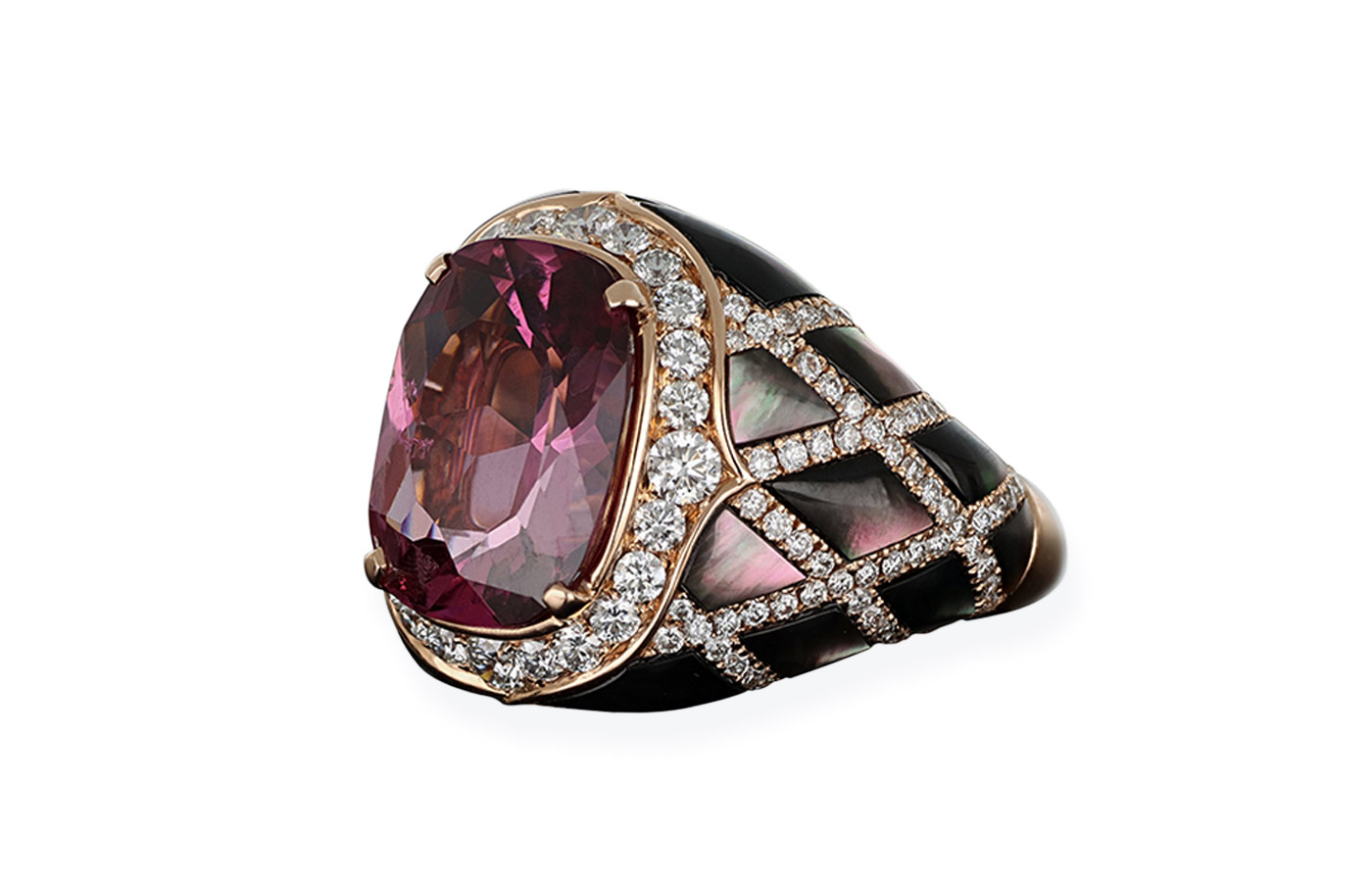
Maison J’OR Intrigo ring with a 6.89 carat umbalite garnet, 1.85 carats of natural diamonds, and grey mother of pearl, set in 18k rose gold
KP: You have produced pieces in both titanium and carbon fibre – both unusual and more challenging choices. What are some of the difficulties associated with these materials?
LG: We love challenges; they are an excellent way to measure our creativity and test our technical abilities. With titanium and carbon fibre, we have created fascinating and complex jewellery pieces, like Lilium and Fluid. These are new and different products that leverage the capabilities of these two materials, namely their lightness, which allows us to create jewellery with far greater volumes.
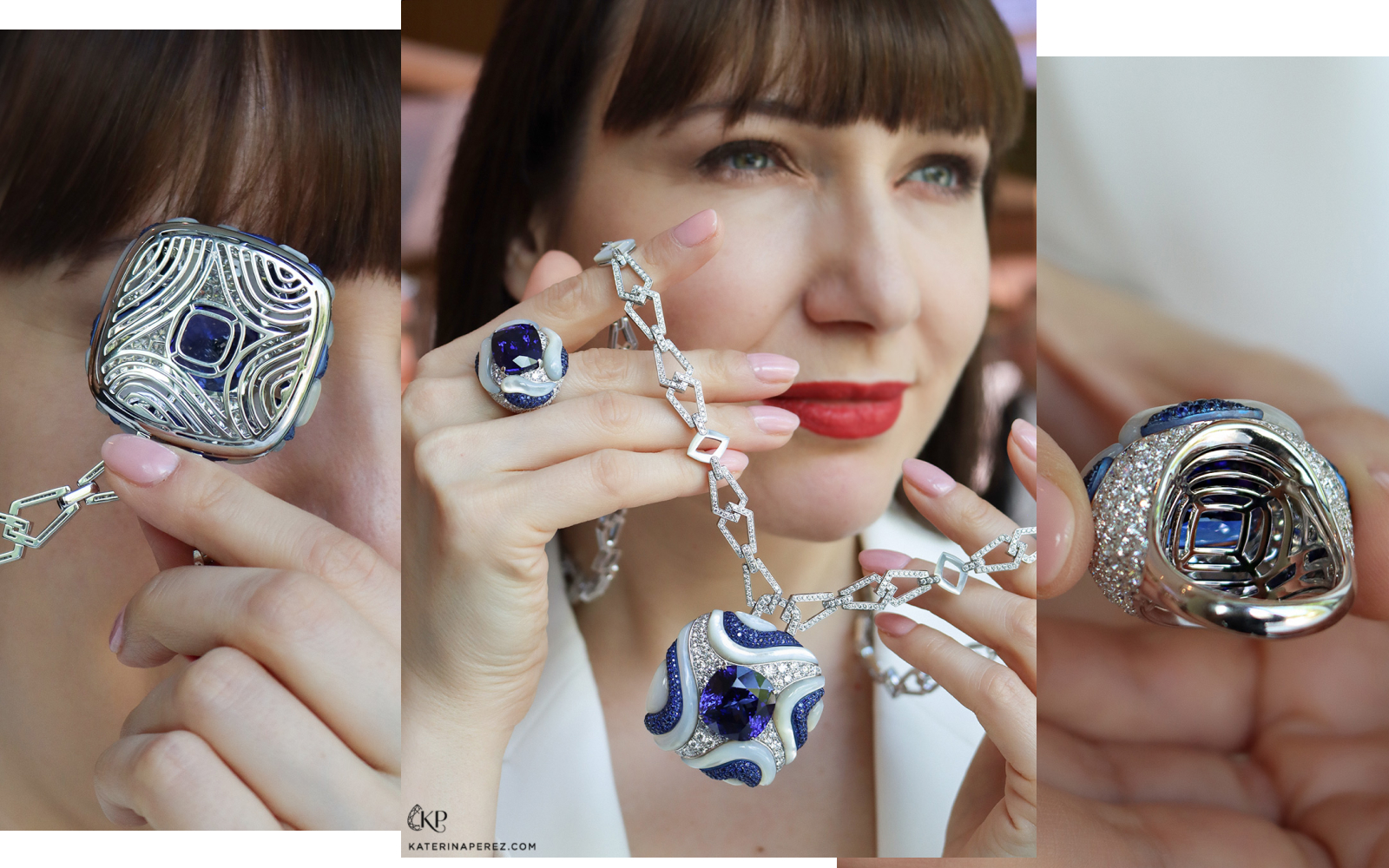
Katerina Perez presents the Maison J’OR Over the Sea collection, including a necklace with a 35.84 carat tanzanite, 14.46 carats of diamonds, 3.21 carats of blue sapphires and mother of pearl alongside a matching ring with a 17.23 carat tanzanite centre, 3.11 carats of diamonds, blue sapphire, and mother of pearl, both set in 18k white gold and blue titanium
KP: Gemstone inlay is also used extensively across many Maison J’OR collections. Can you share the challenges associated with this technique and why you often return to it?
LG: Mother of pearl is all part of our Mediterranean heritage. It is something that we have revived and enhanced because its effects are truly unique, almost silky, and the inlay technique allows us to place this in a great variety of lines and shapes. I would describe it as a distinctive component of the Maison and certainly not one that is easy to achieve, considering the high standards we have set for ourselves. It requires a very high level of manual craftsmanship from the cutters and careful attention during processing. For hardstones, we use them in many ways as they are very expressive. We chose a central role for these semi-precious stones, even using them in our most exclusive collections. They are often polished into smooth cabochons rather than faceted to reveal all their natural beauty. This is our way of breaking the aesthetic codes of high jewellery and producing something different. What fascinates us most is their unique shapes and textures, the opposite of a sparkling, faceted gem. We appreciate their vibrant tones and captivating inclusions, which help us to create beautiful effects.
KP: Finally, what else you can share about your techniques and the methods you use to stand out from the crowd?
LG: I would only add an essential point about the vision for our brand: a J’OR piece of jewellery must be able to express the highest levels of manual craftsmanship through form, technique and the harmony that binds all its components together. It must then seduce with a voice that emerges through colour and light. A J’OR jewel is born to be perfect. Of course, absolute perfection does not exist, as it is beyond our earthly possibilities, but we must all be convinced that when a piece of jewellery is finished, it represents the pinnacle of what goldsmithing art can express.
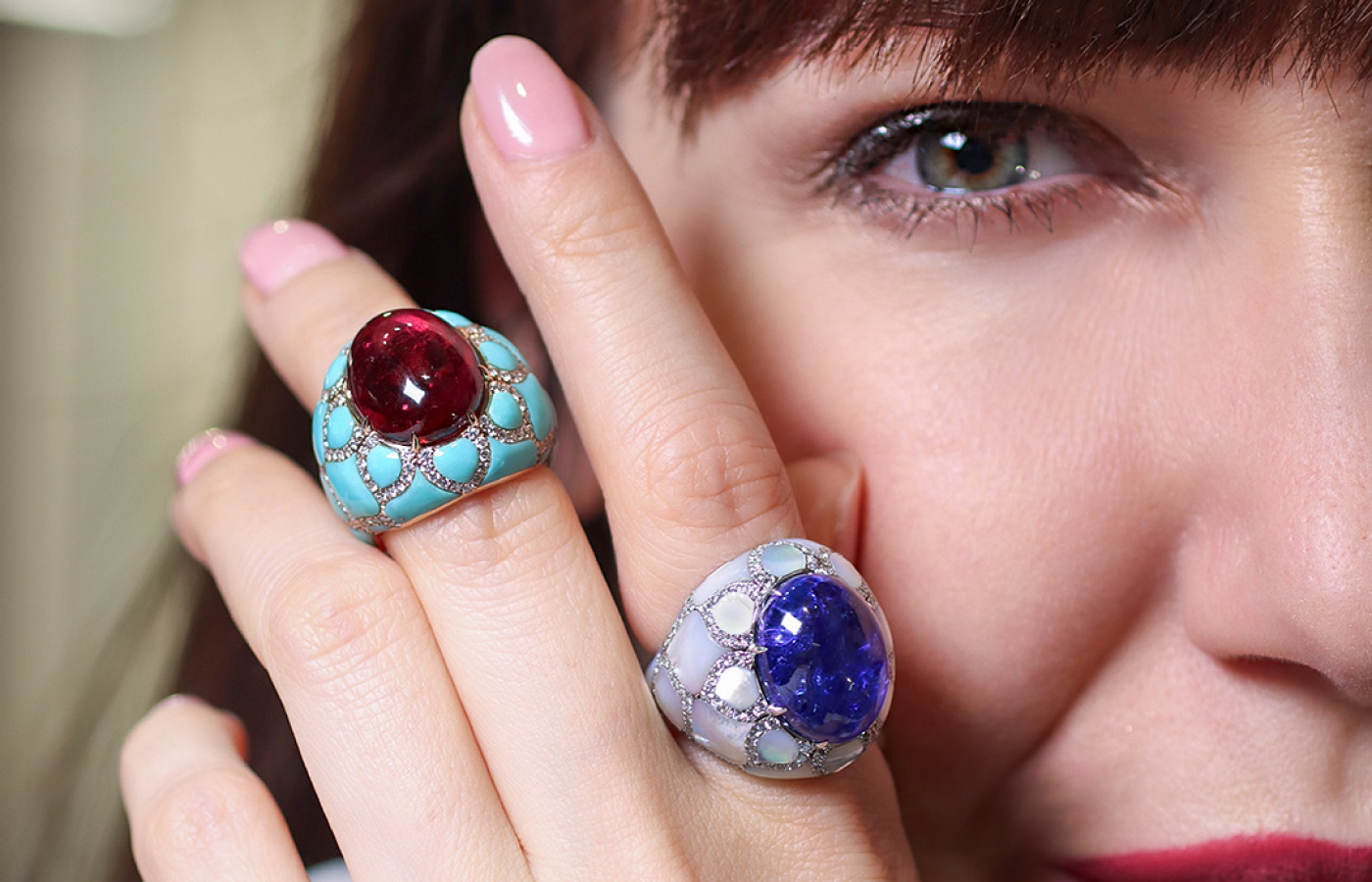
Katerina Perez wears two cocktail rings from the Maison J’OR Harem collection, including an 11.15 carat rubellite cabochon ring with turquoise and natural diamonds, set in 18k rose gold
I am sure you will agree that striving for absolute excellence is something to be admired, as is acknowledging that jewellery-making is not a static skill but a constant evolution. It is this attitude that always fills me with excitement when visiting Maison J’OR at various international exhibitions… I can always be assured of something finely crafted, colourful, comfortable and charming. What better way to express the wonders of womanhood than through true Italian artistry?

WORDS
Katerina Perez With more than 12 years’ experience in the jewellery sector, Katerina Perez’s expert knowledge spans everything from retail sales and management to content creation, including brand building, jewellery writing and styling. Born and raised in St Petersburg, Katerina’s favourite hobby as a child was playing with the treasures in her grandmother's jewellery box, inspiring a lifelong love of jewellery from a very early age. She spent five years in St Petersburg University of Culture and Arts studying not journalism but business studies and languages, and her writing skills have developed as her passion for her favourite subject – jewellery – has grown. This is why her writing comes straight from the heart rather than the pages of a book. Daughter of an entrepreneur mother, Katerina exchanged her retail management job for jewellery writing in 2013 and hasn’t looked back since.
Related Articles
Designer Gifts: The Latest Men’s Jewellery for the Label Lover in Your Life
2024 has been the year that men's jewellery really got into its stride, shedding its traditional image, embracing innovation, and emerging as a bold and brilliant category in its own right.
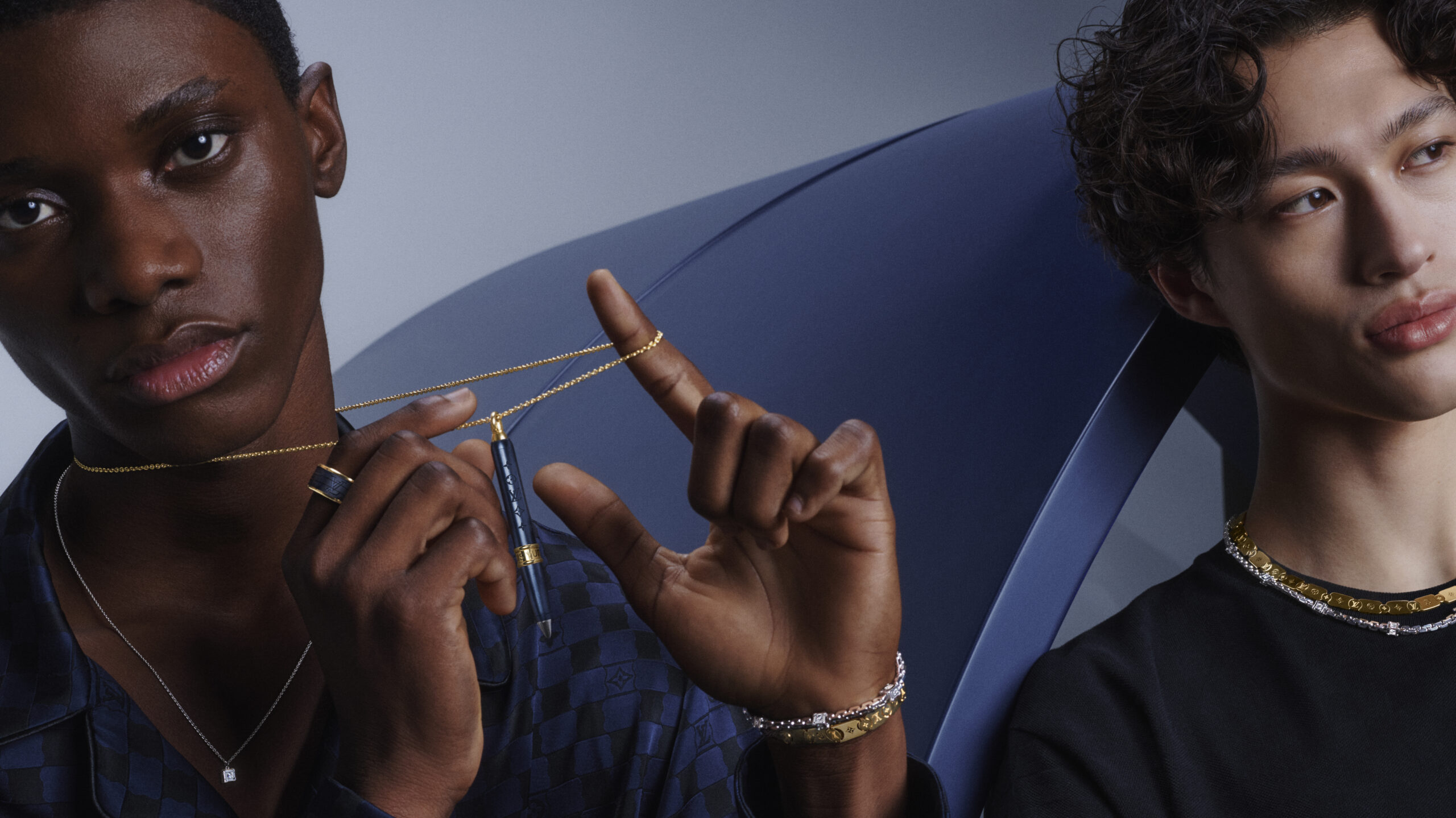
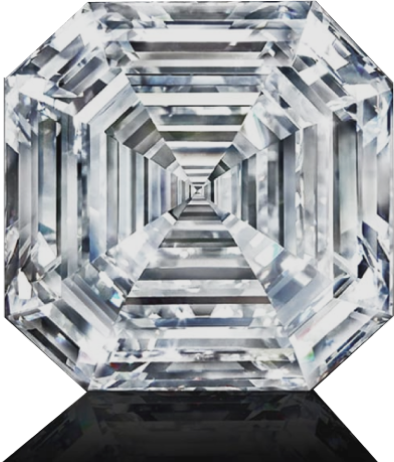
Latest Stories
Add articles and images to your favourites. Just
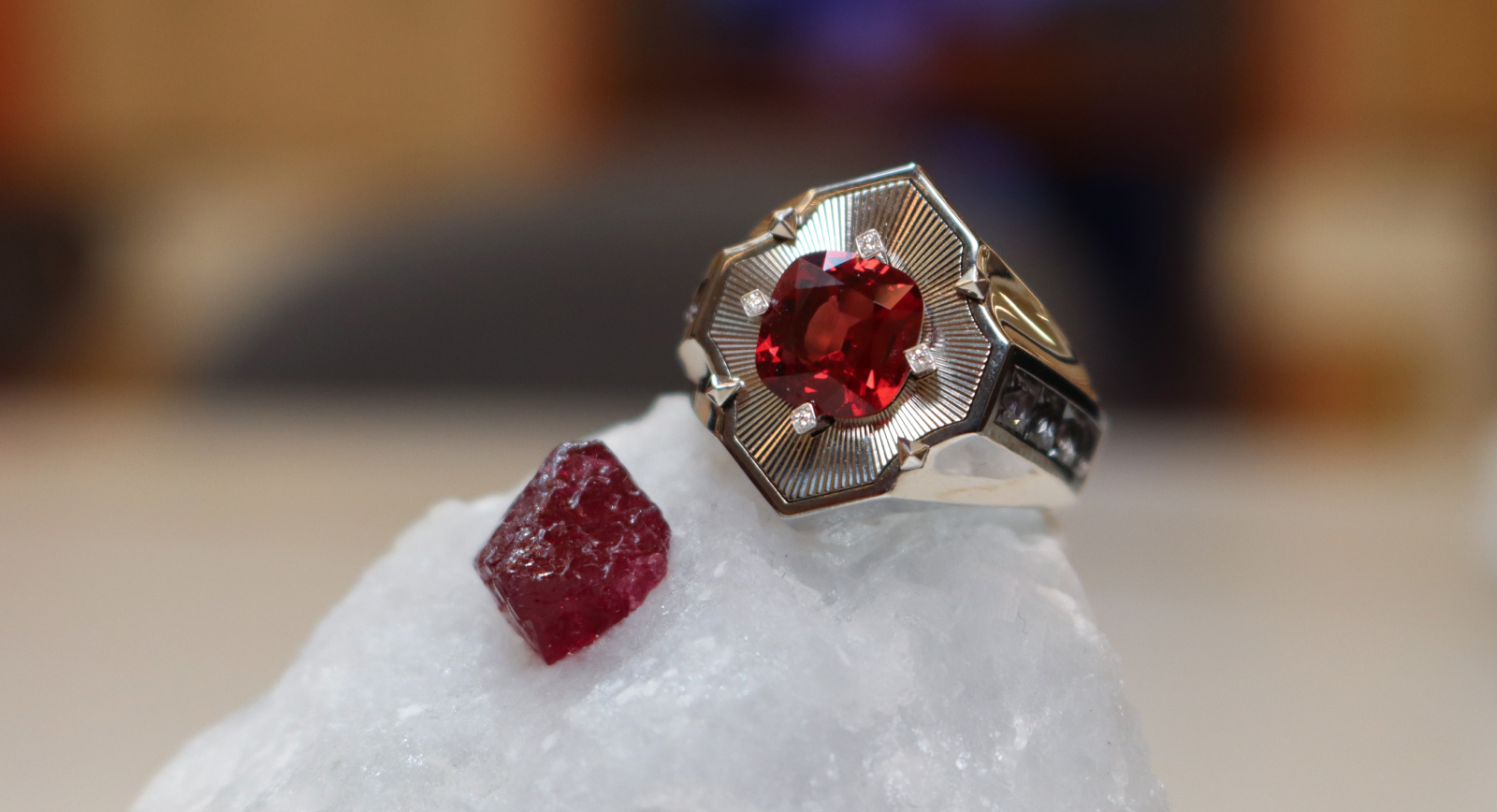
Jeweller of the Month:MADLY Gems
Singaporean brand celebrates 10-year anniversary
Jewels Katerina Perez Loves
Continue Reading
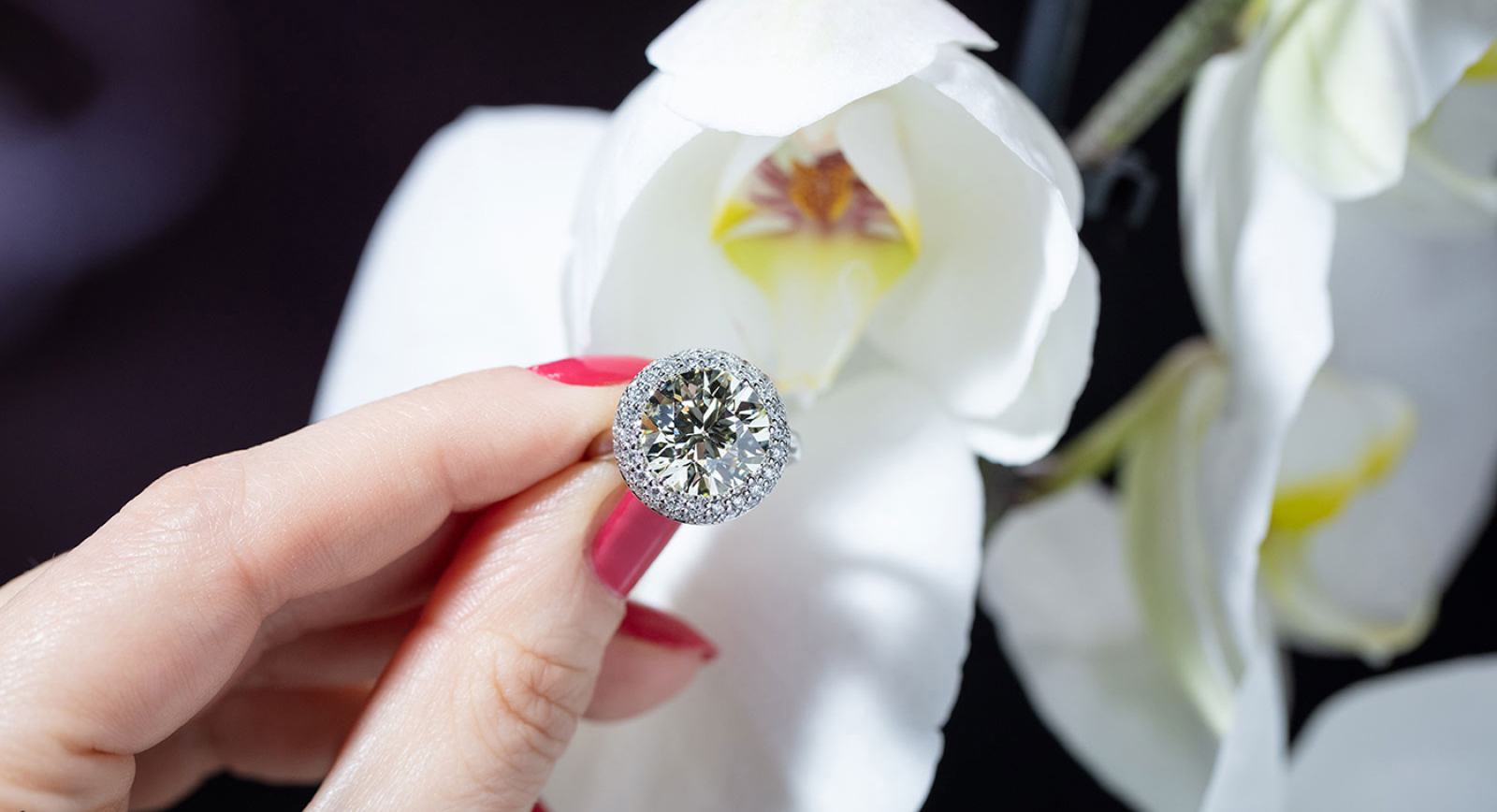
Ask Katerina:Diamond Jewellery Styling Tips for Modern Dressing
Here are some of the answers I gave during the presentation to aid your jewellery dressing…
Brand Focus:Van Cleef & Arpels
Jewellery Insights straight to your inbox
